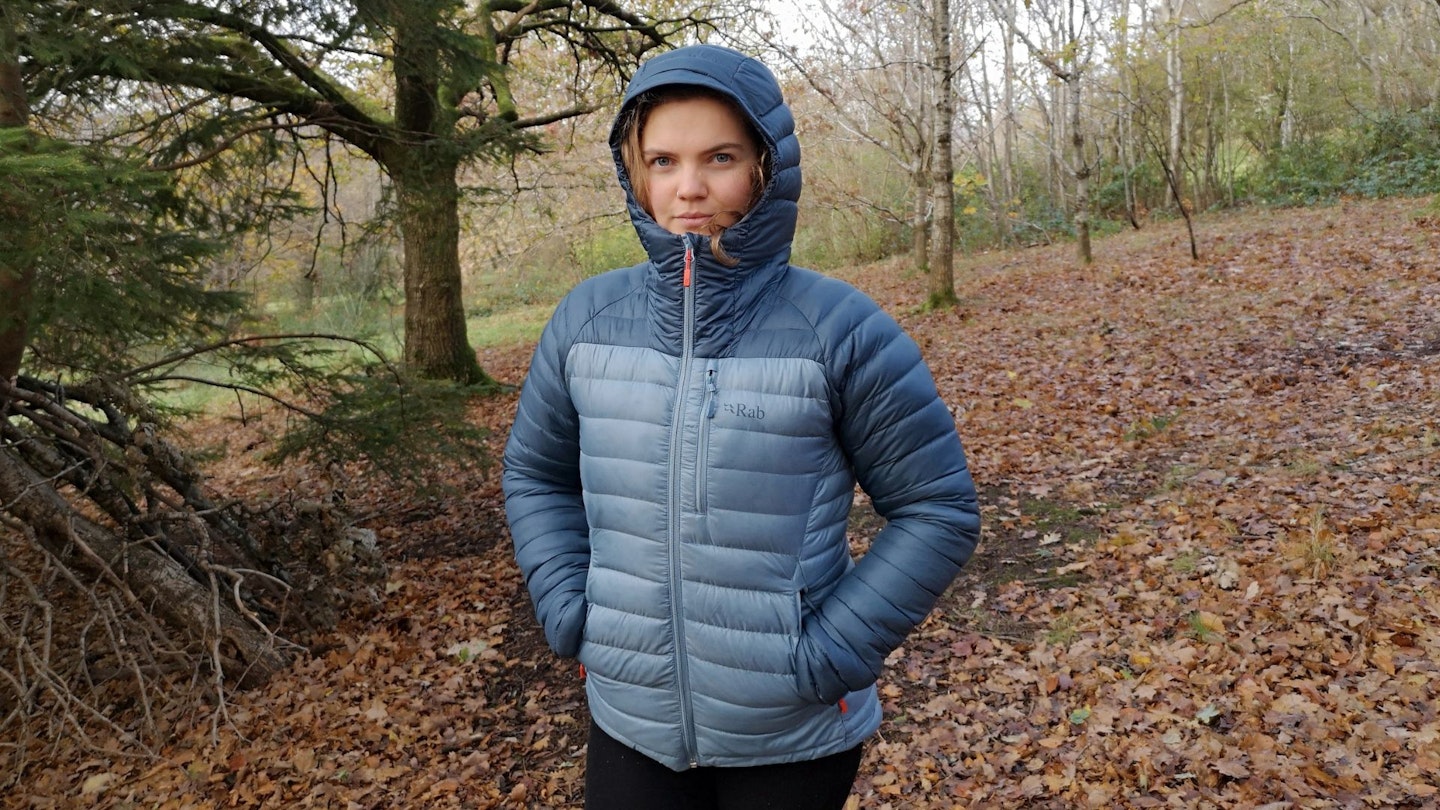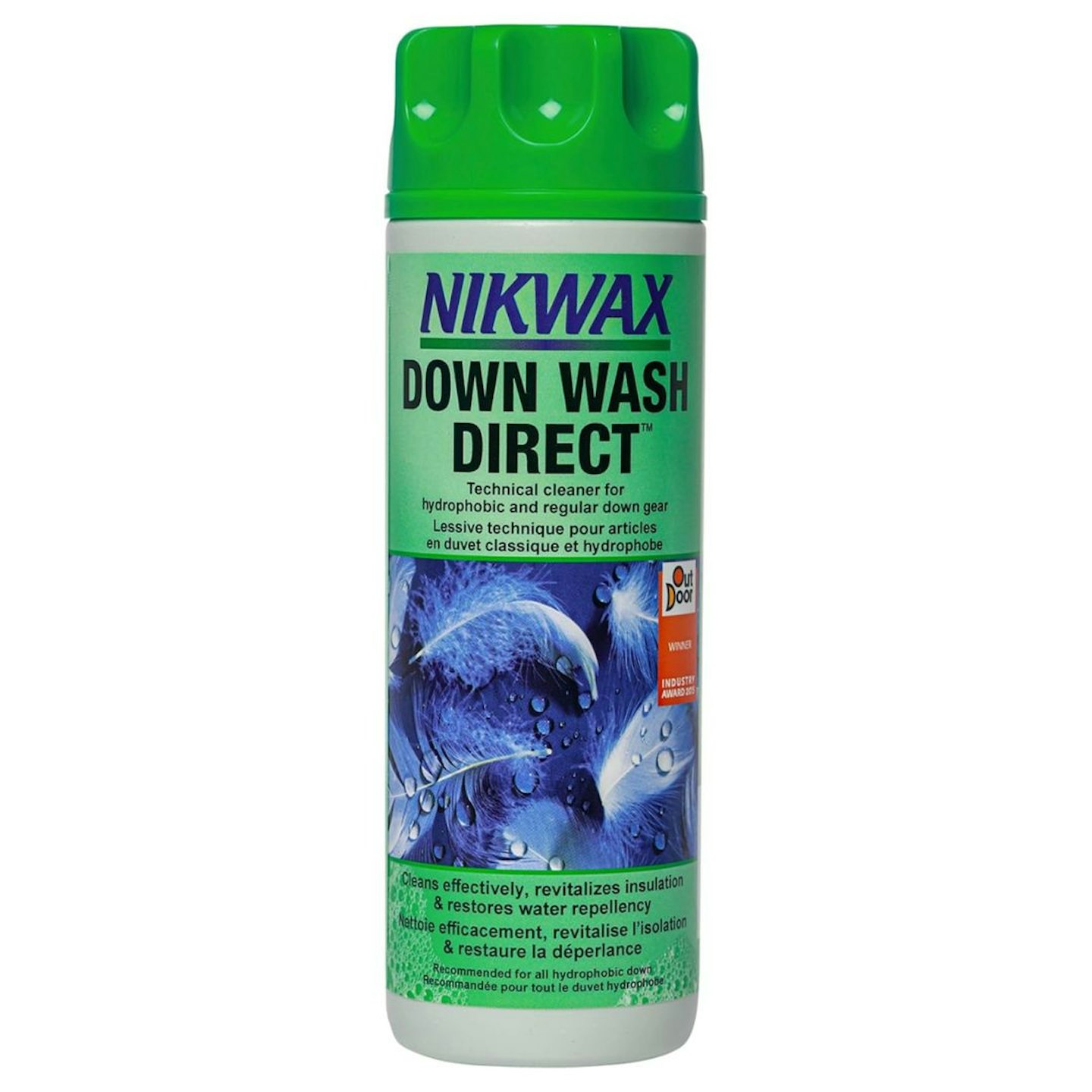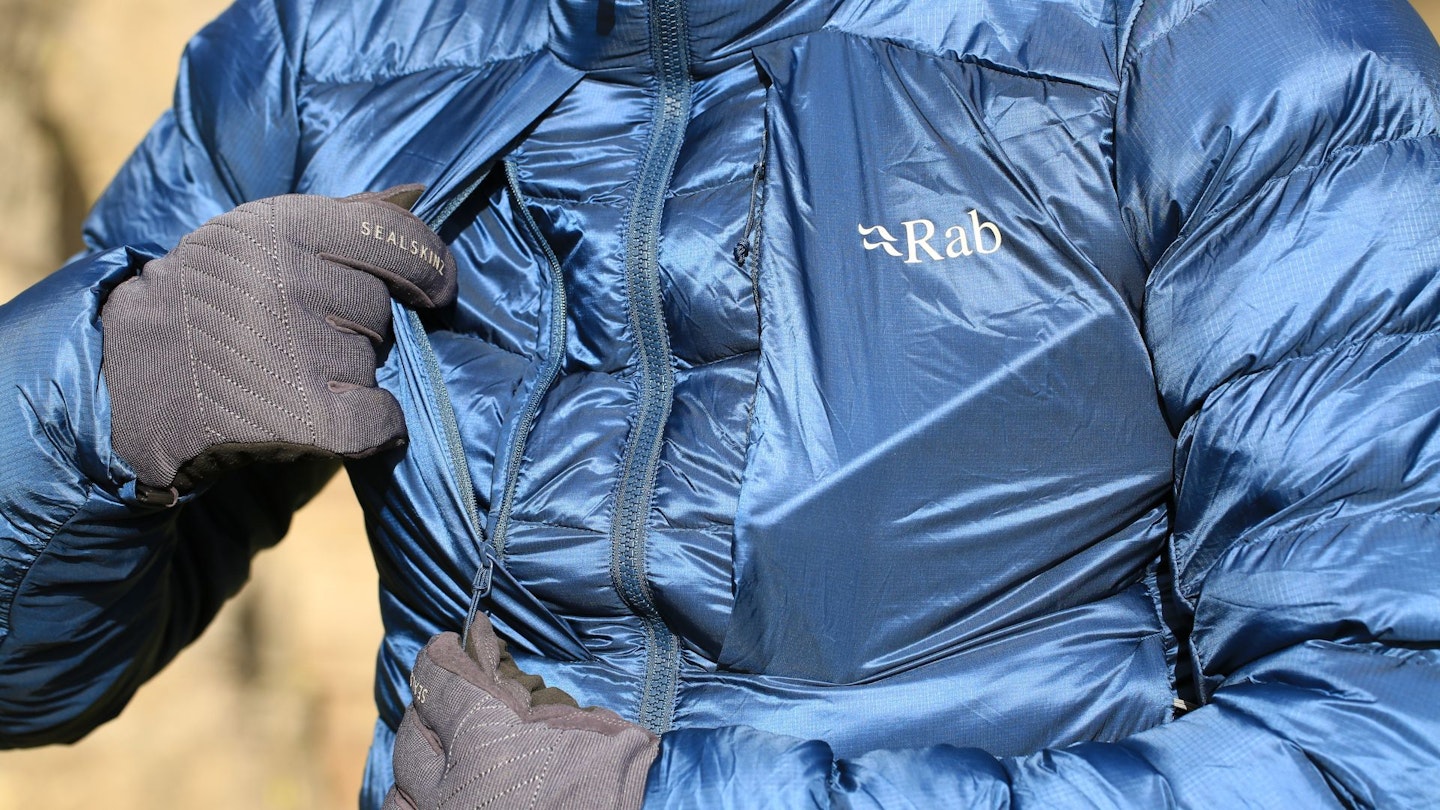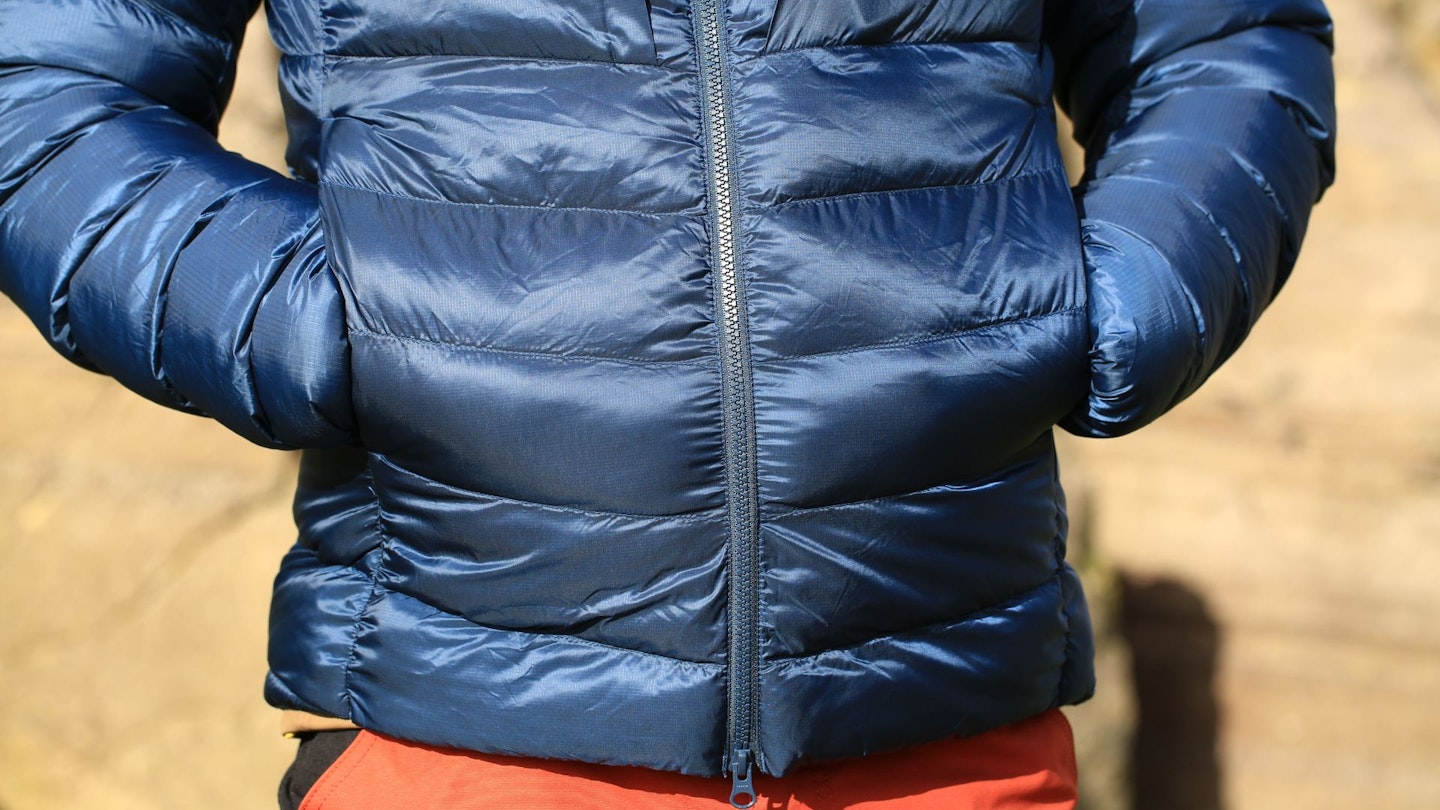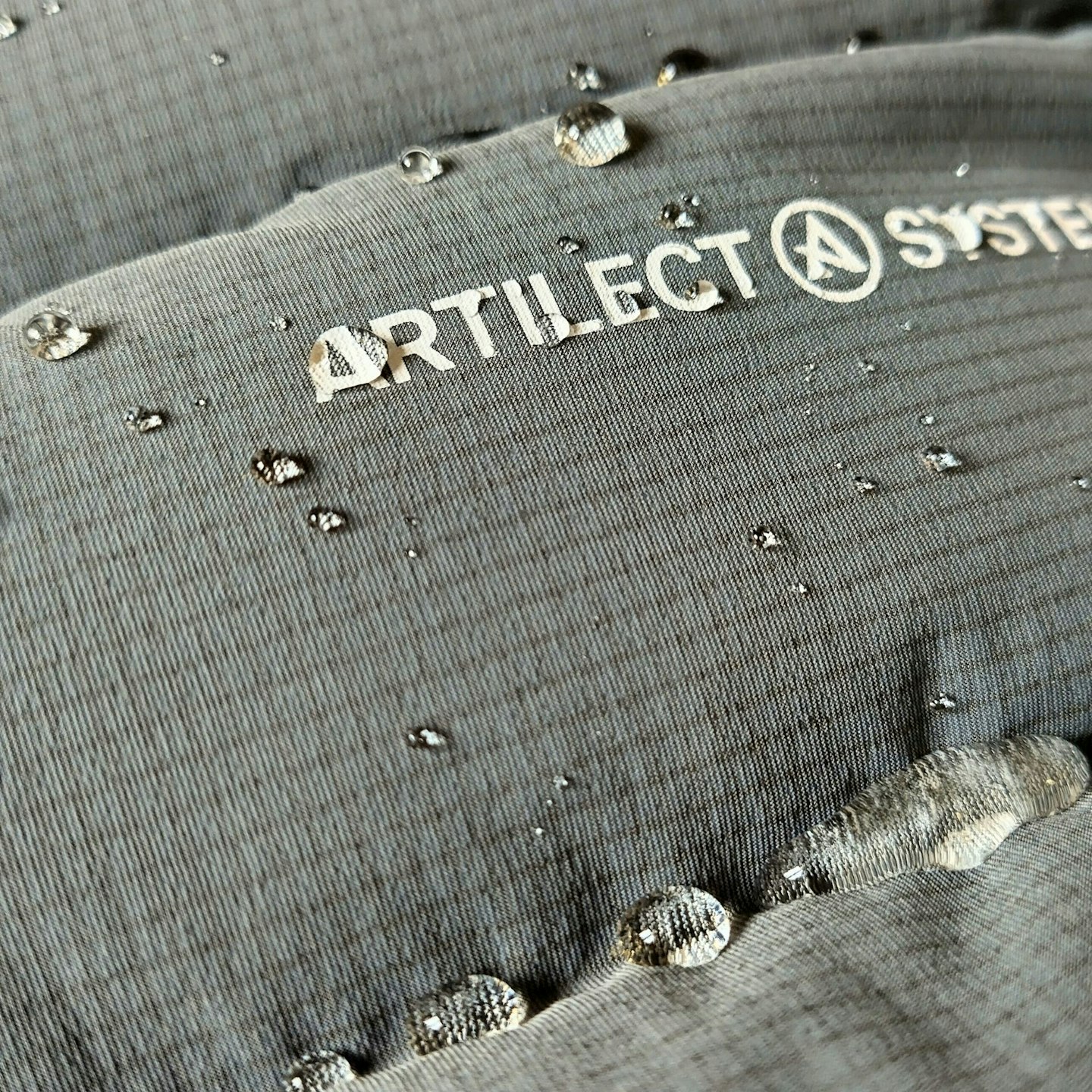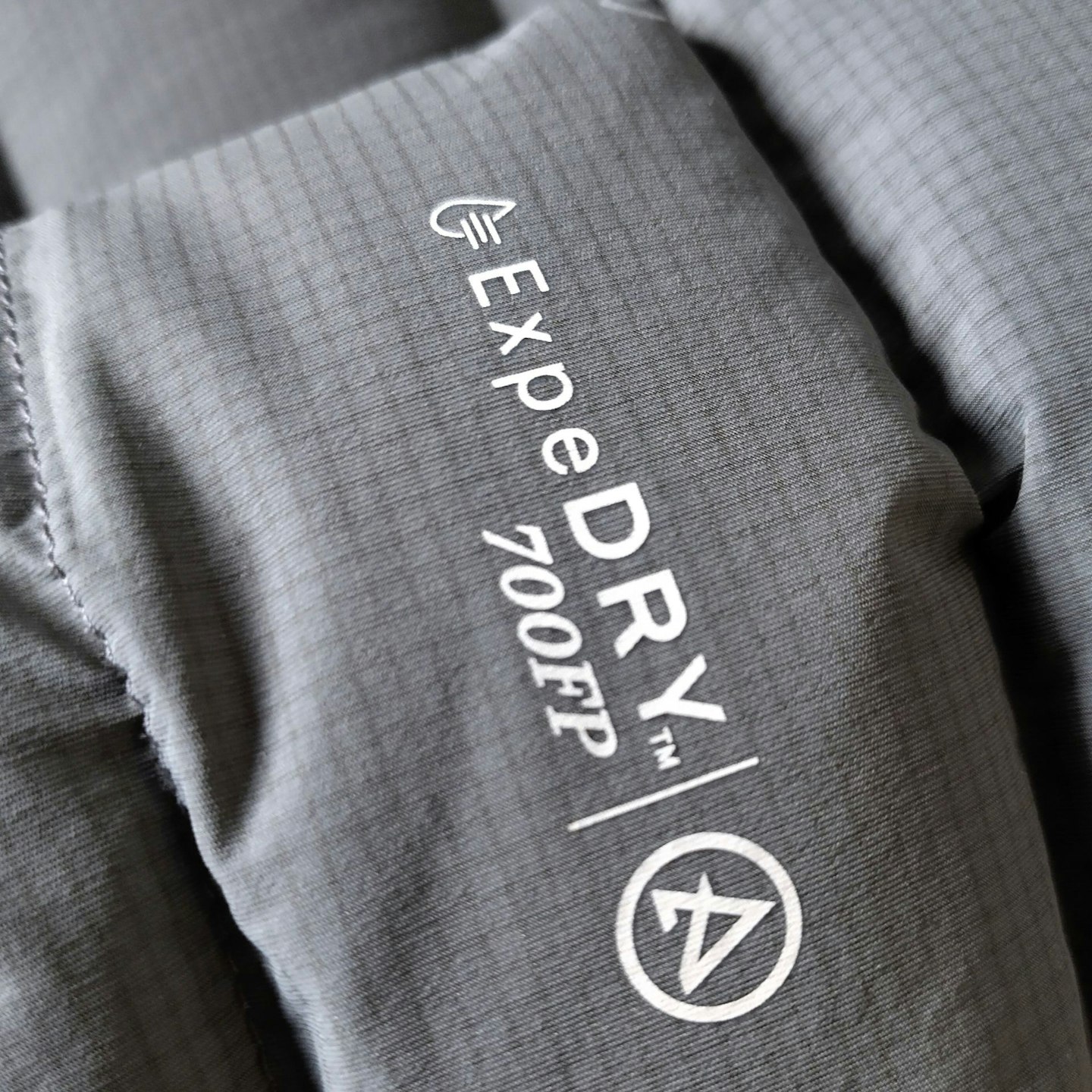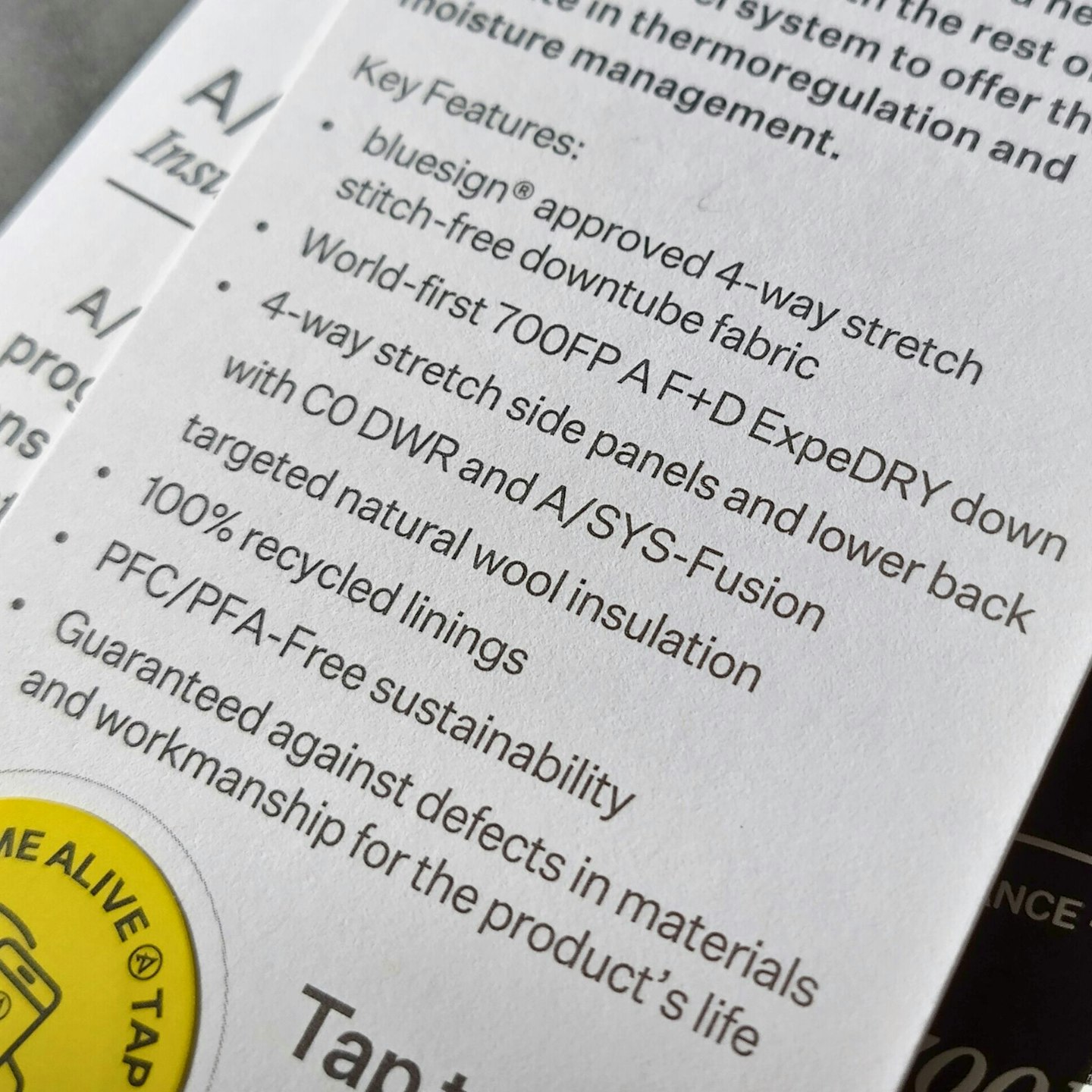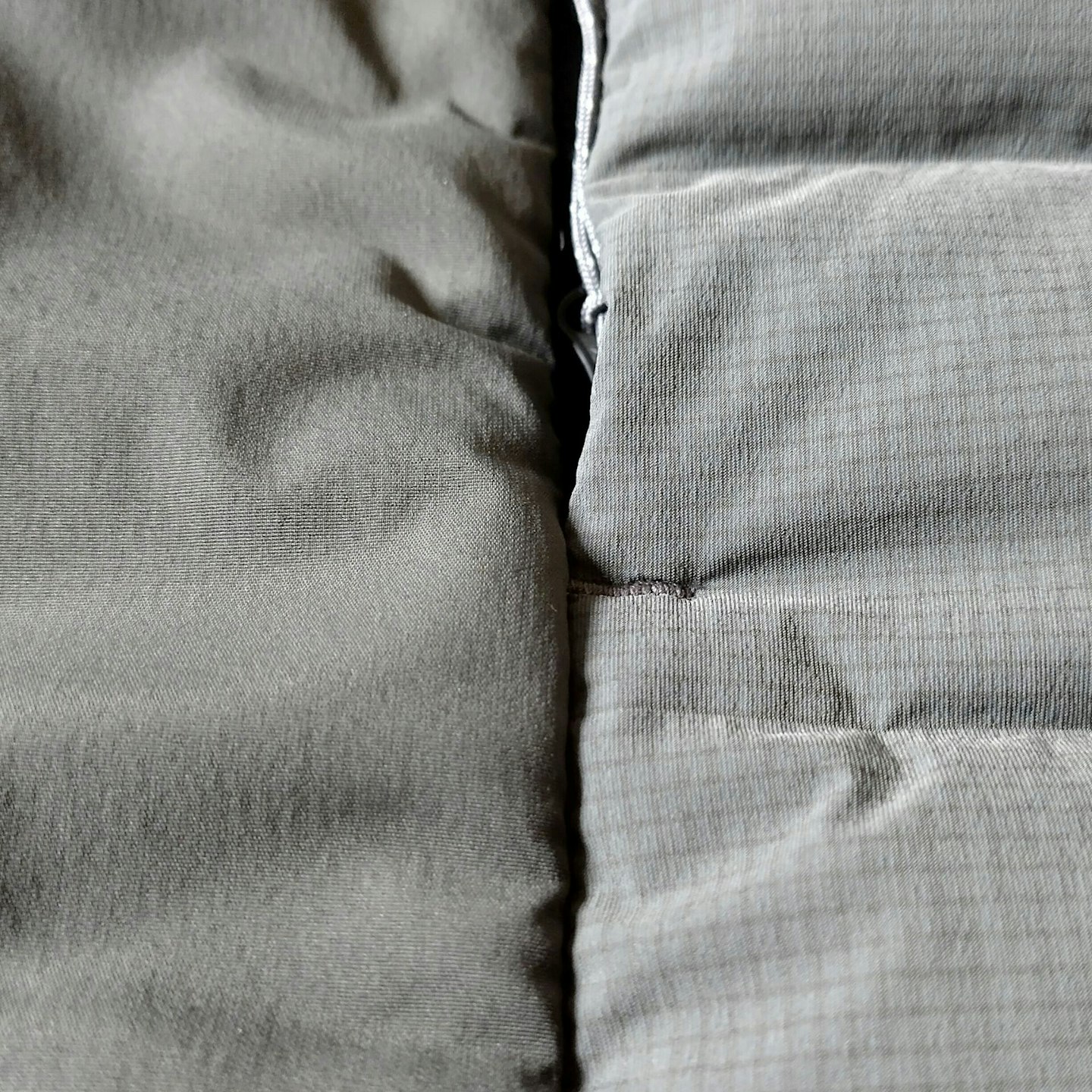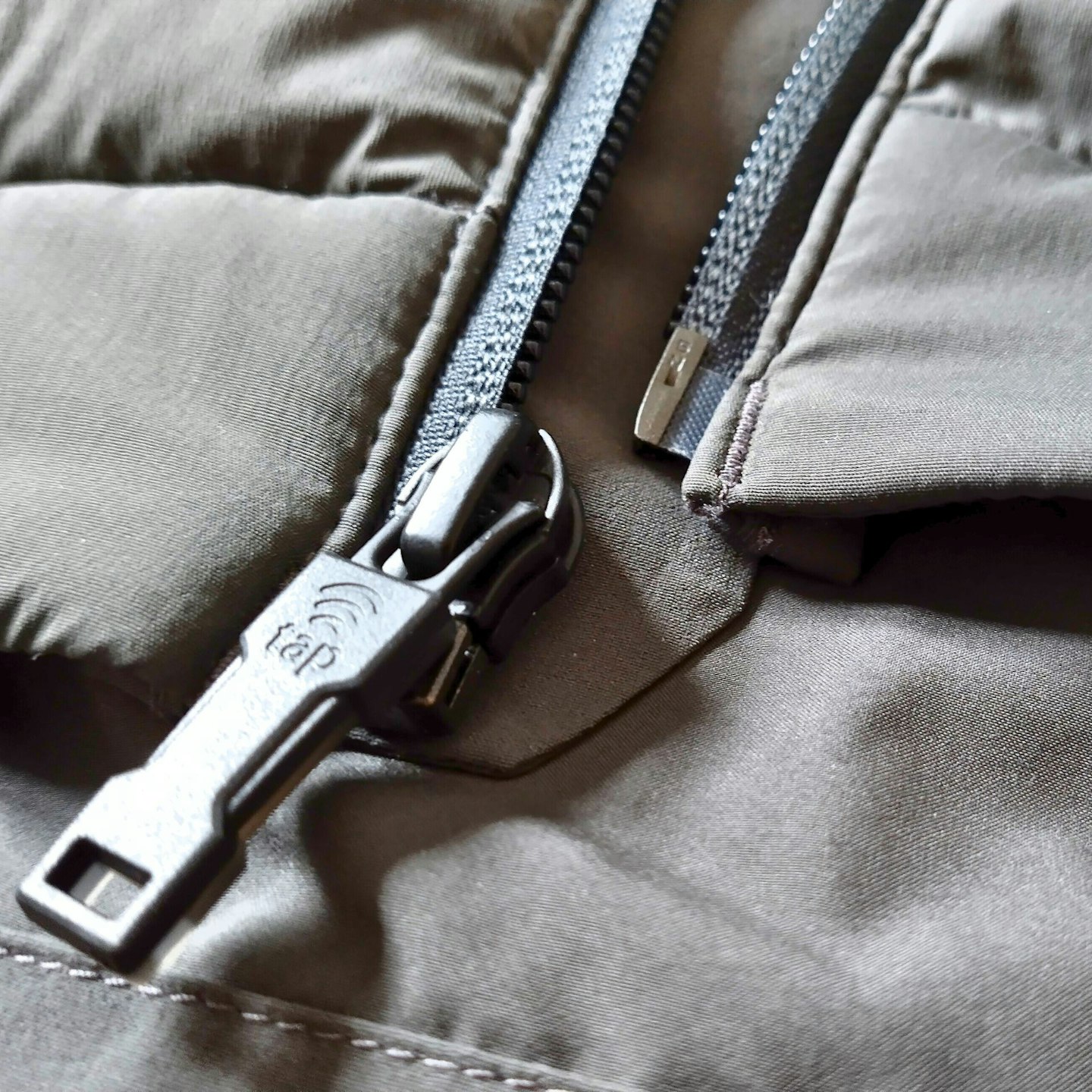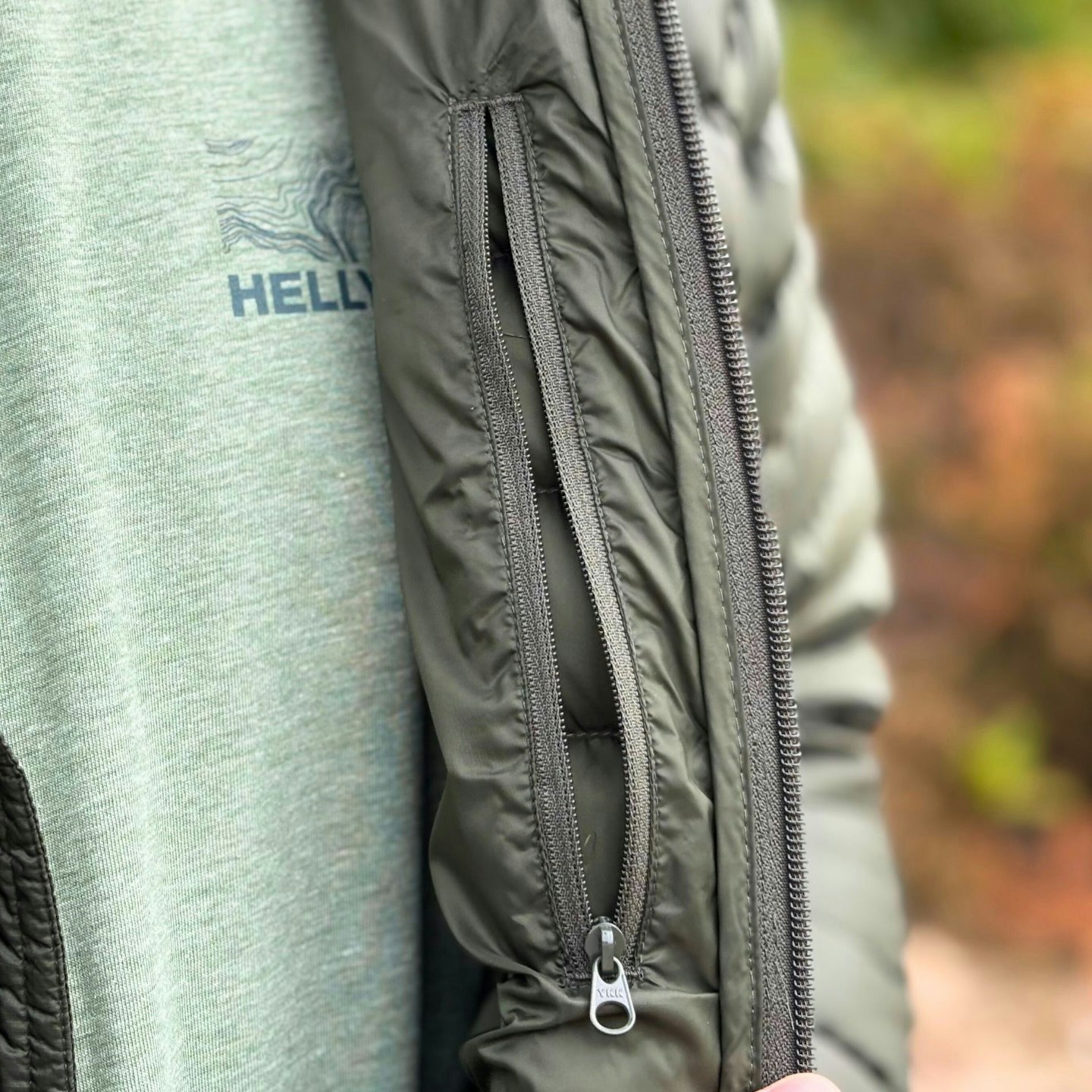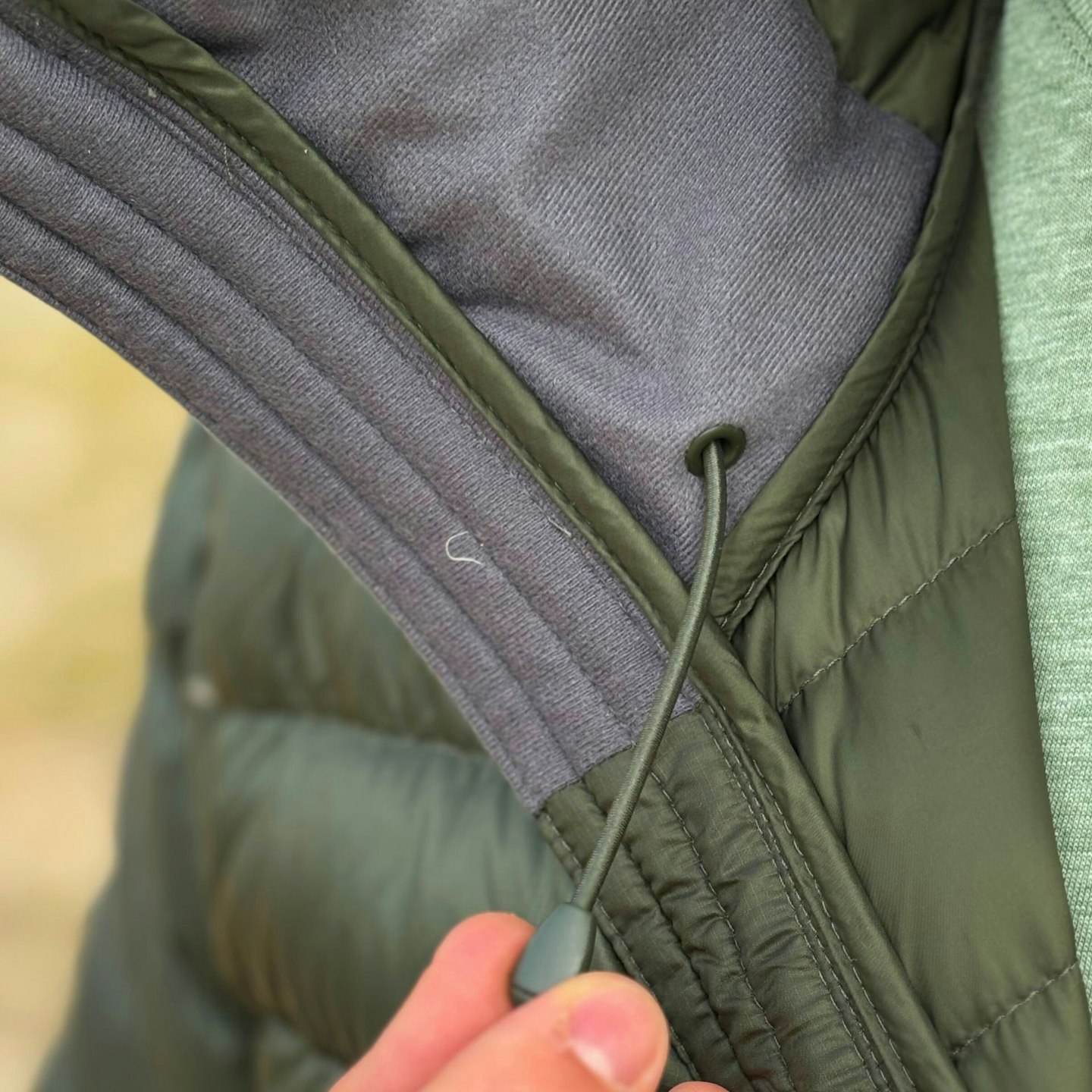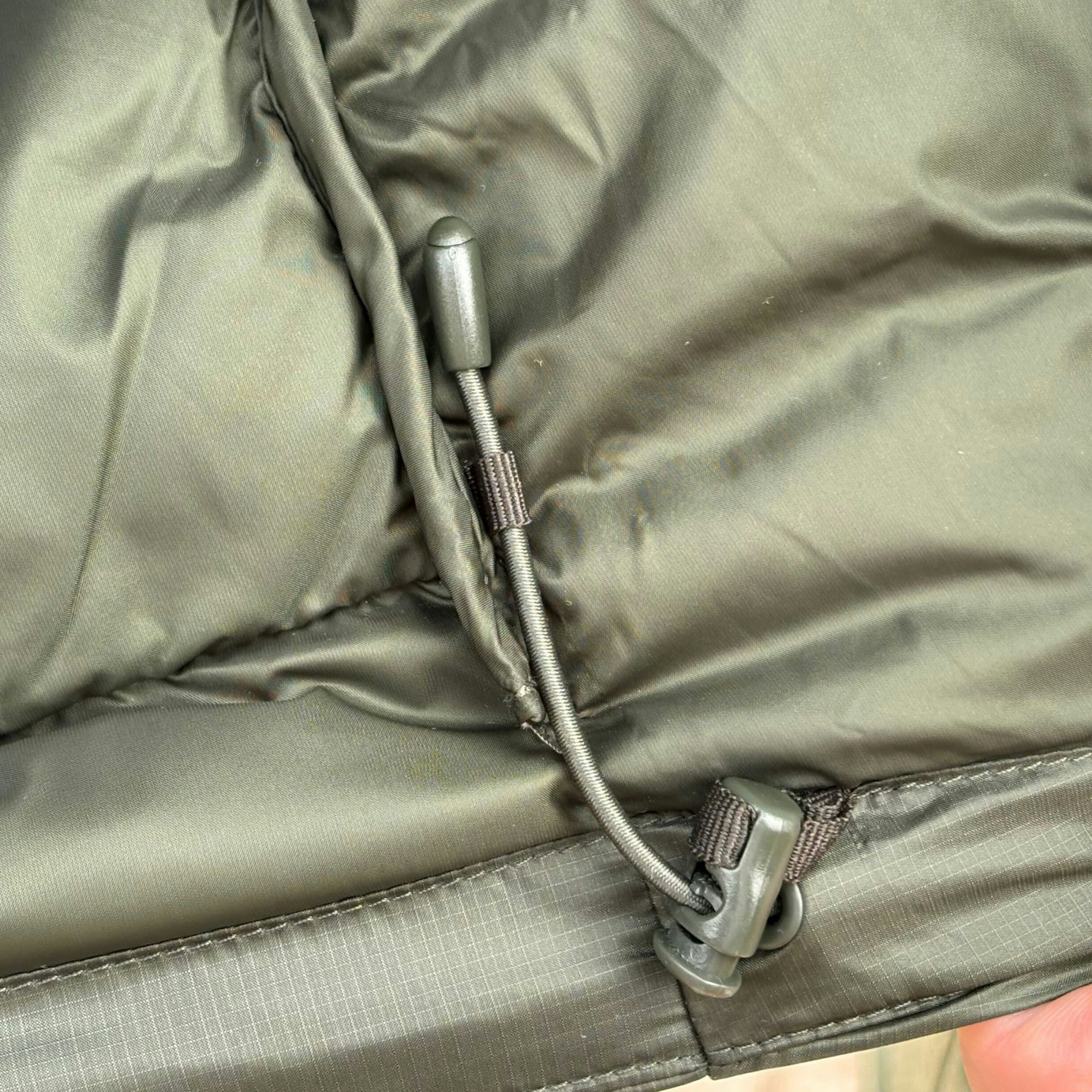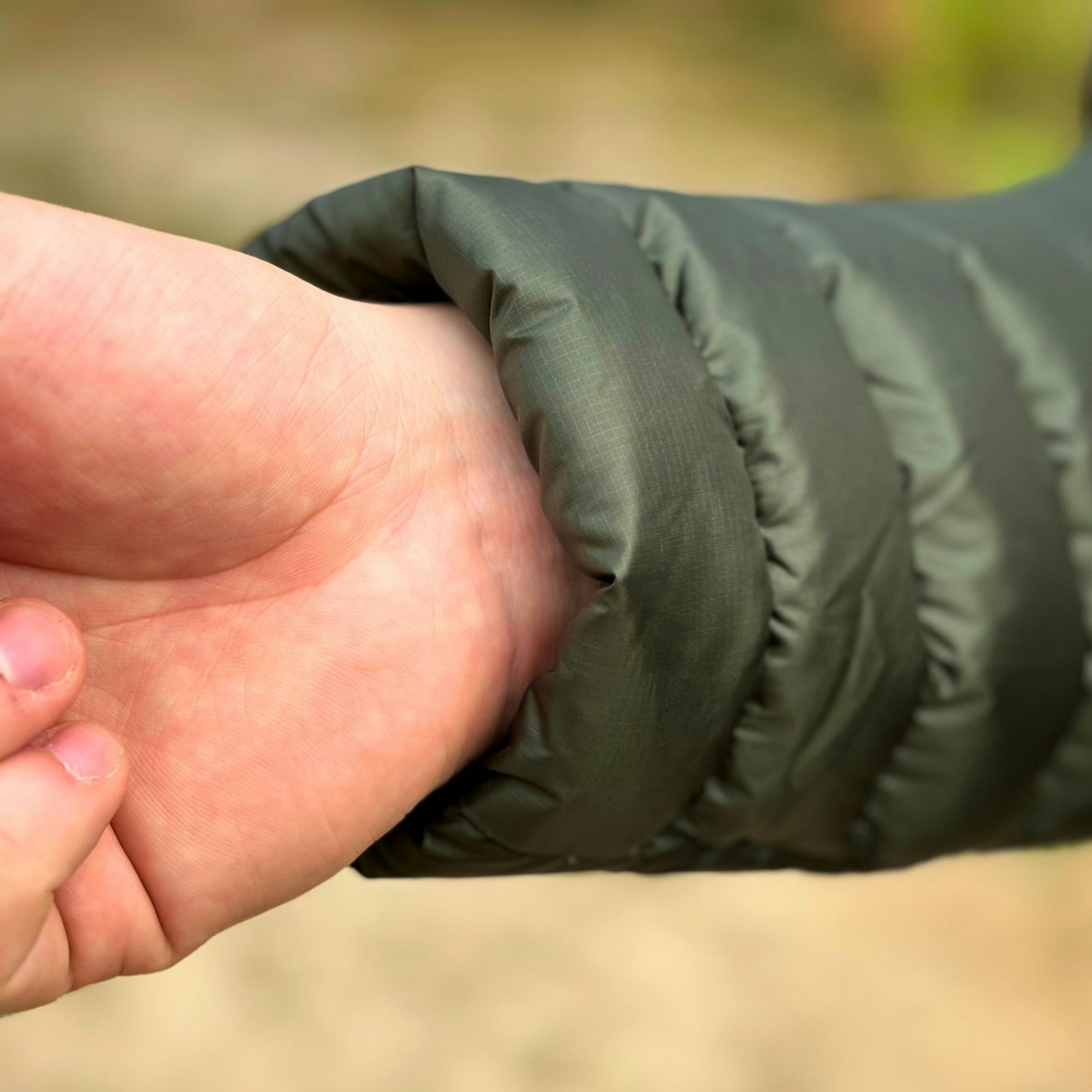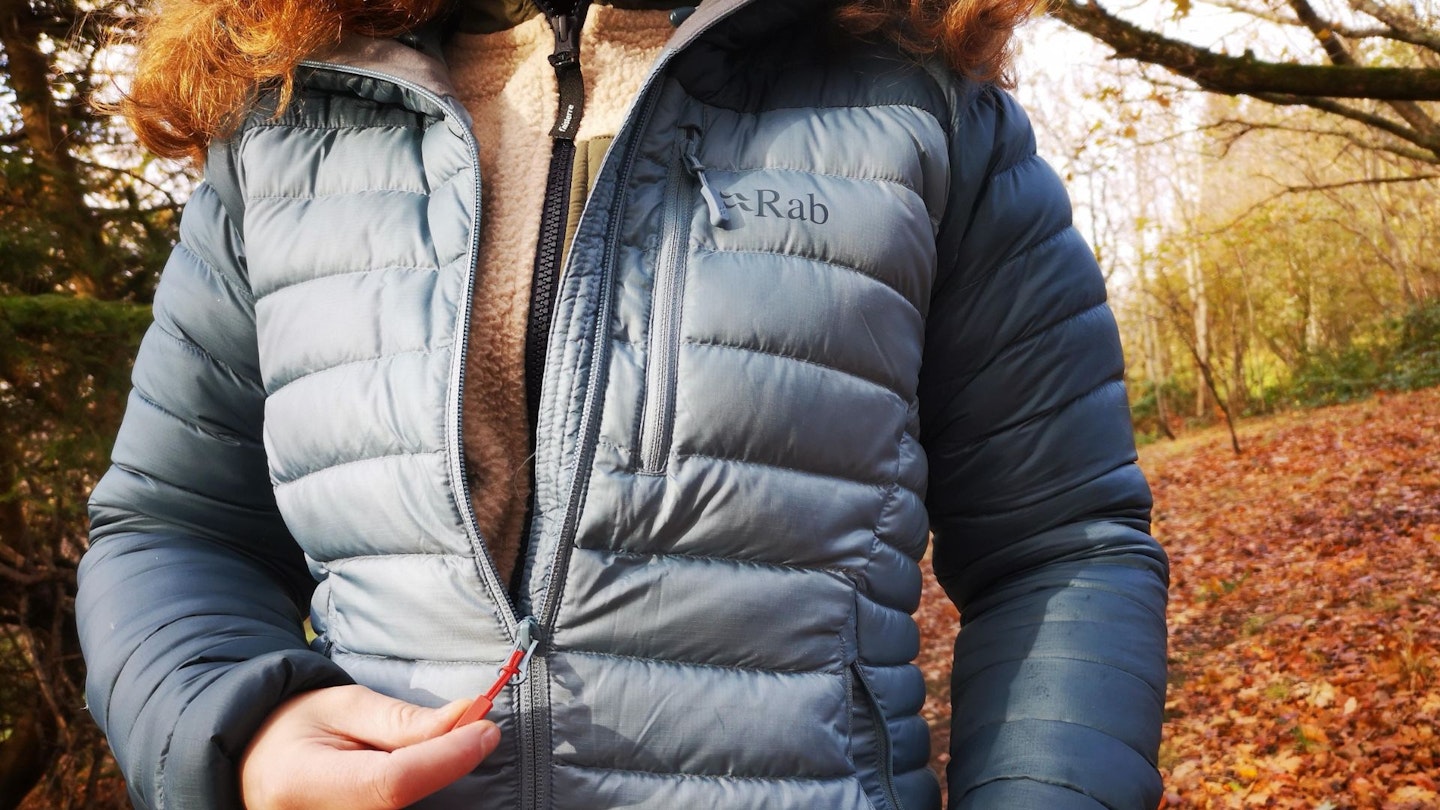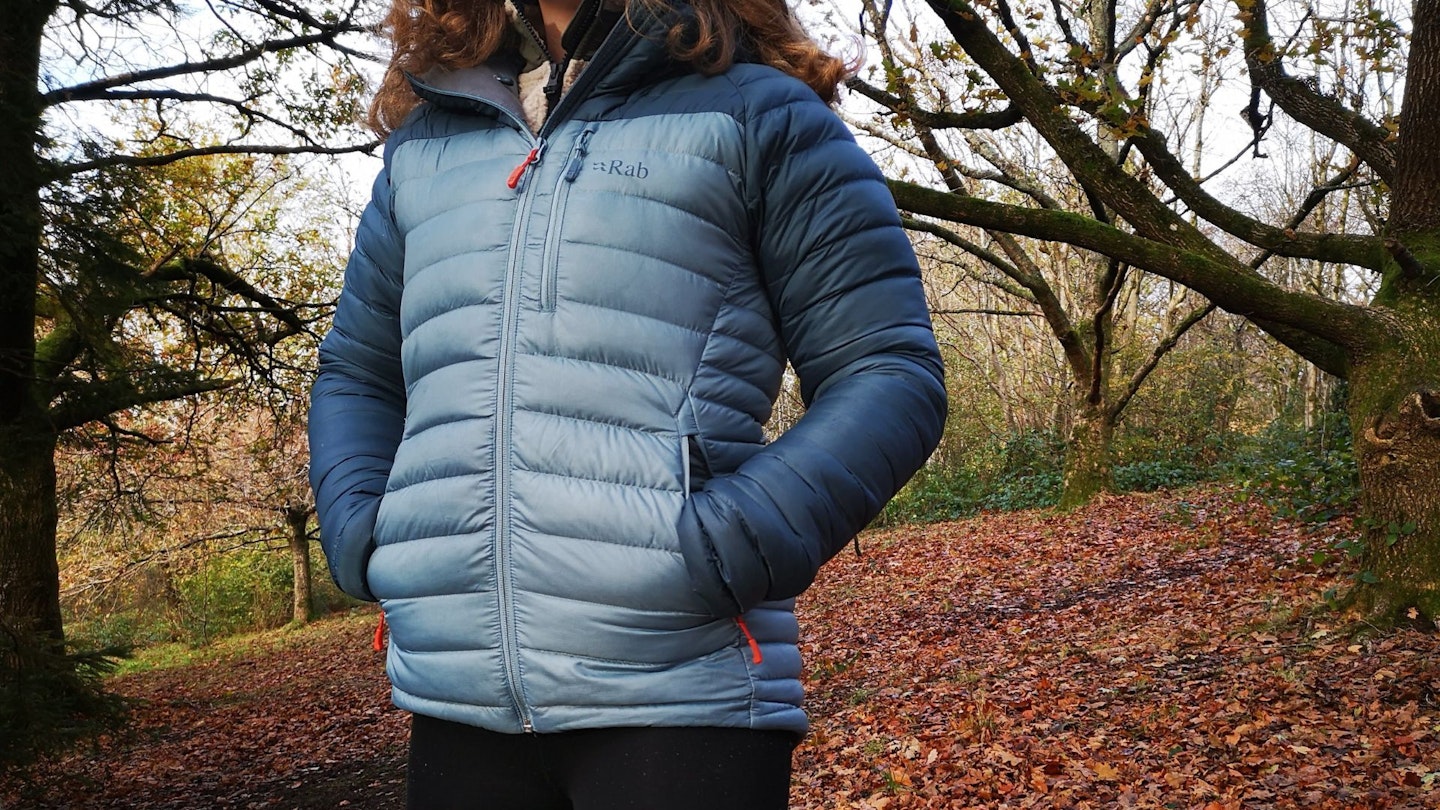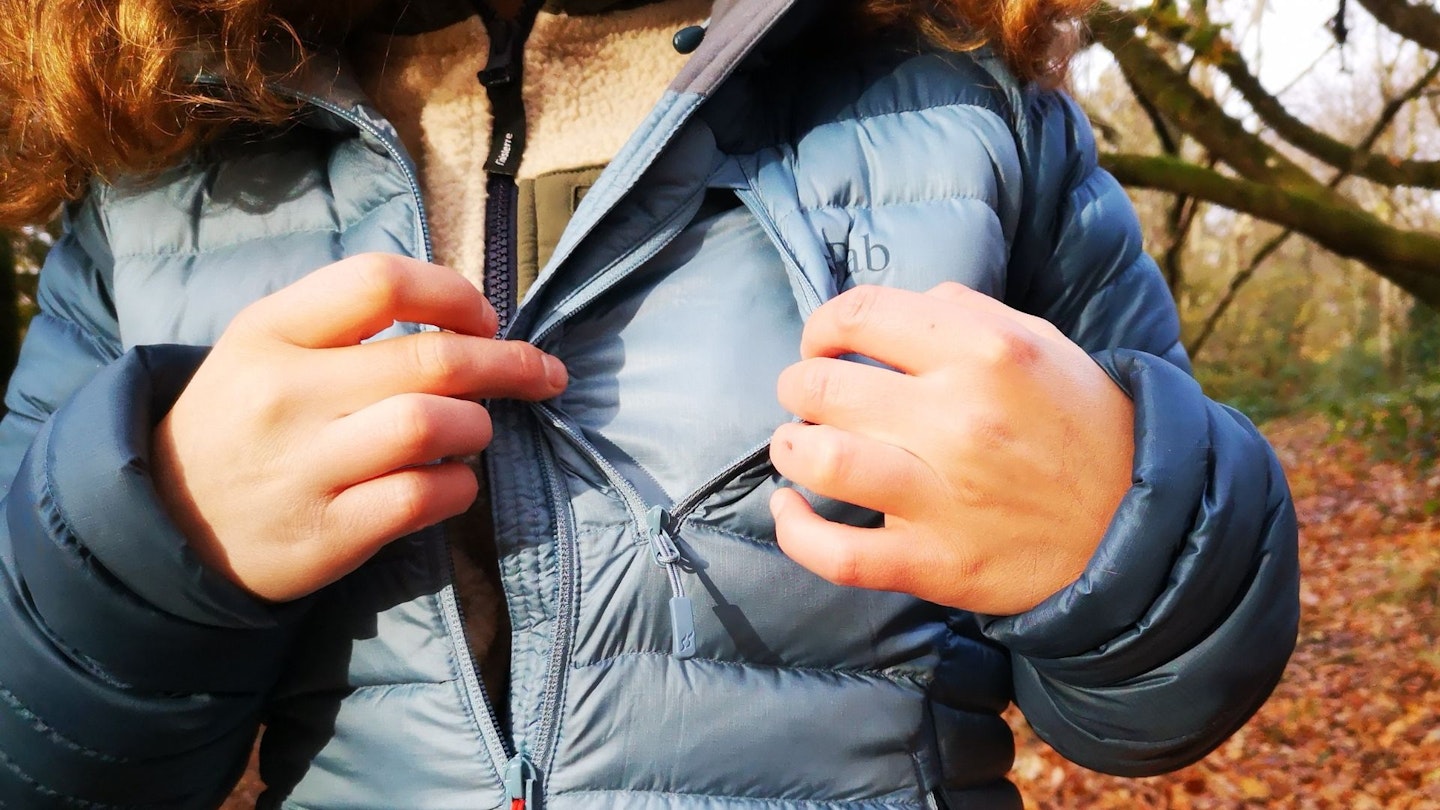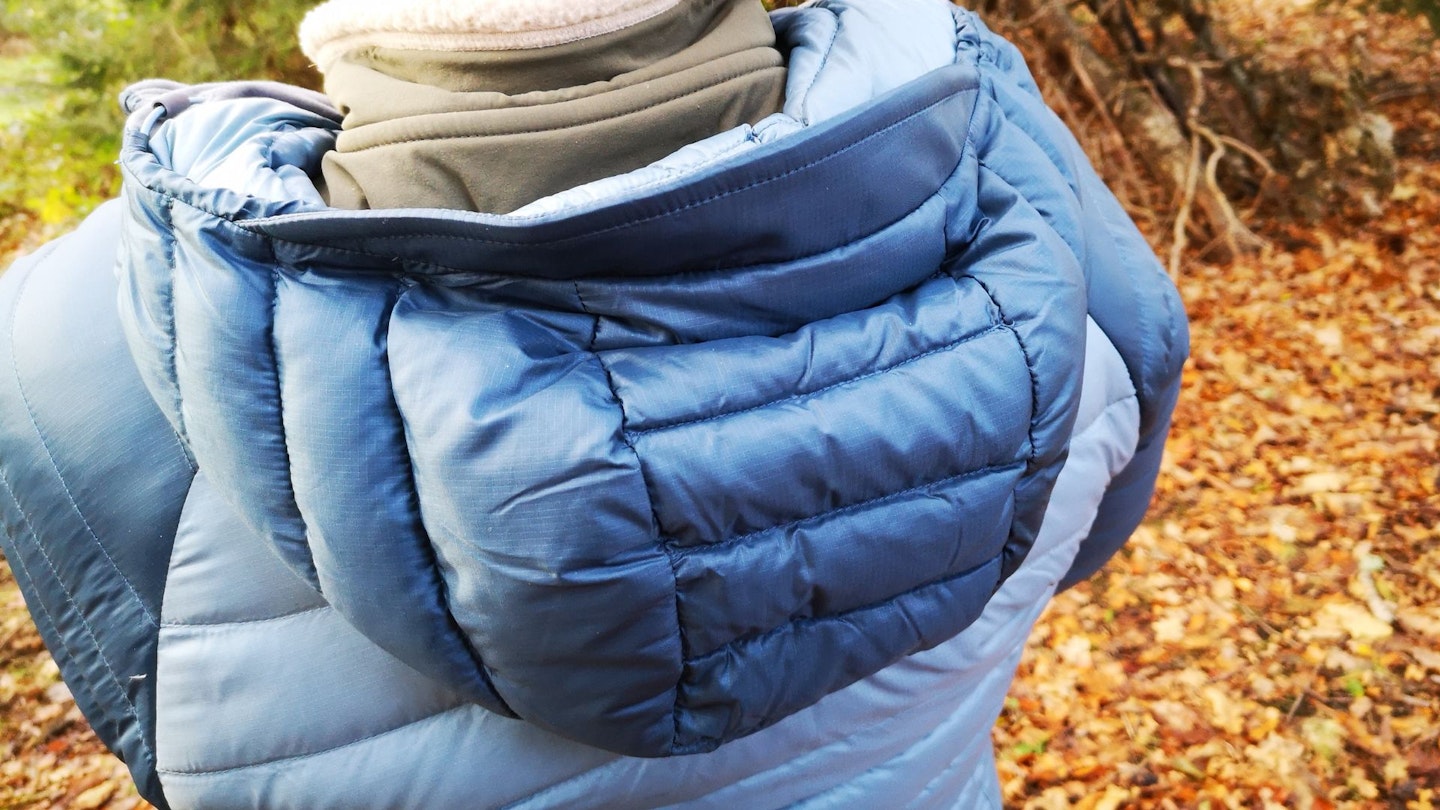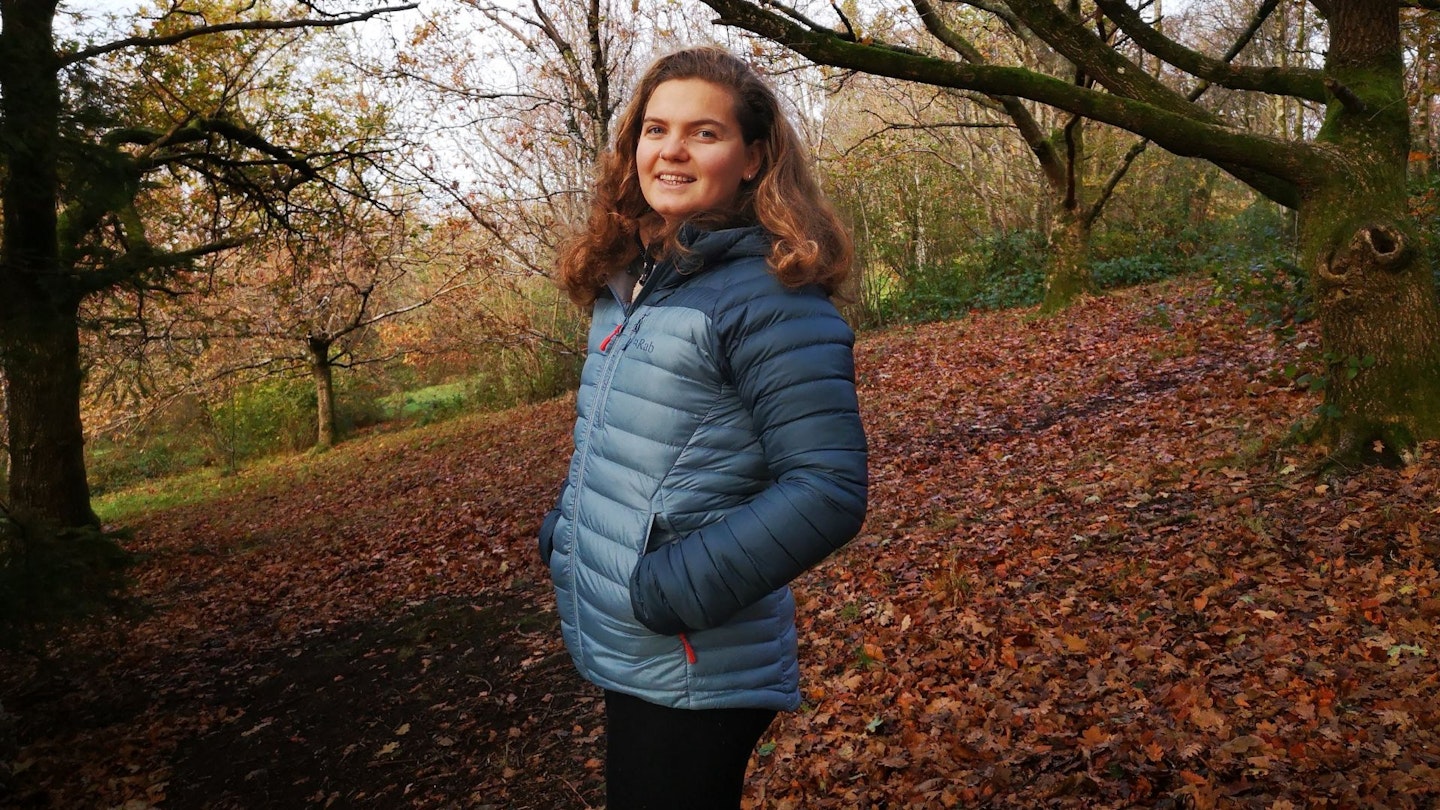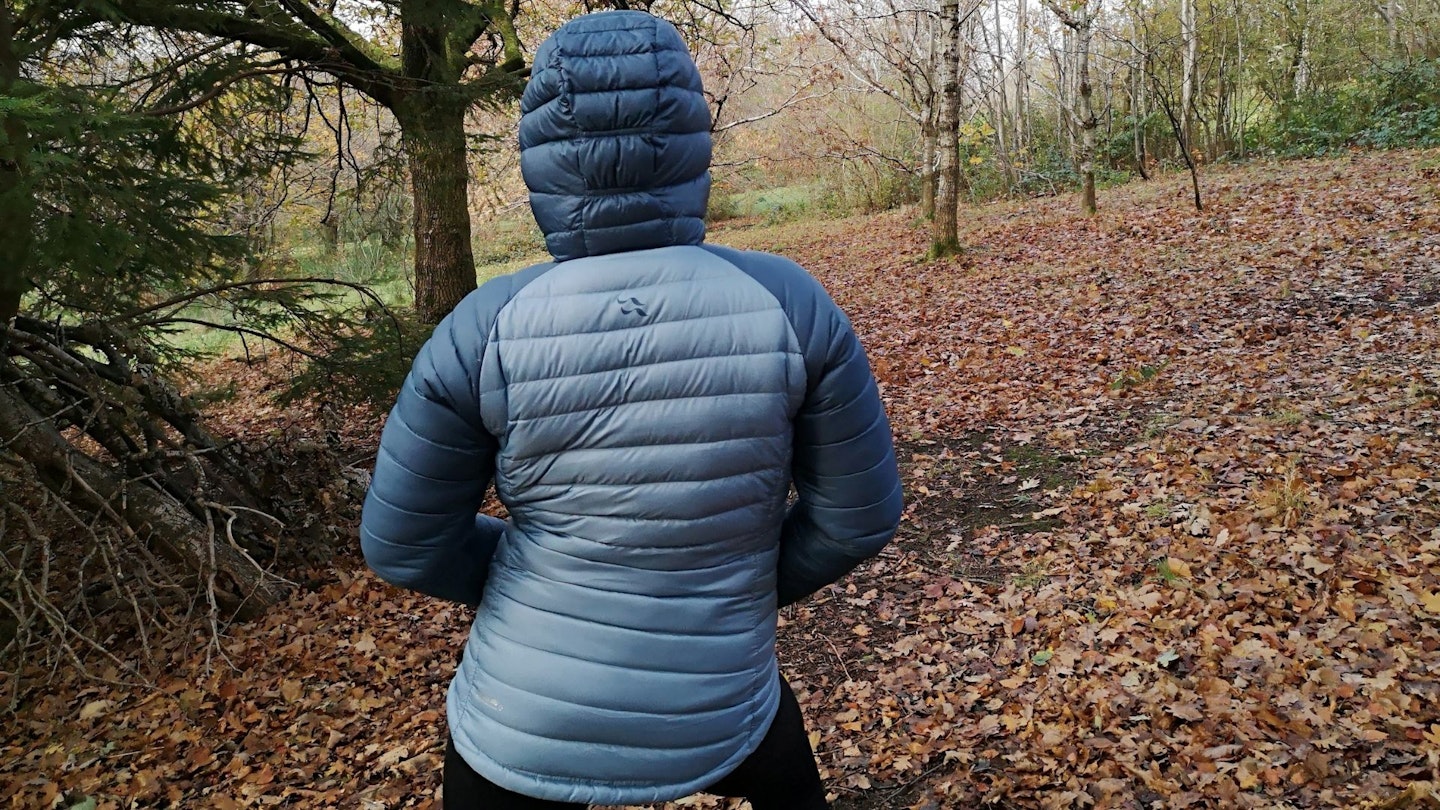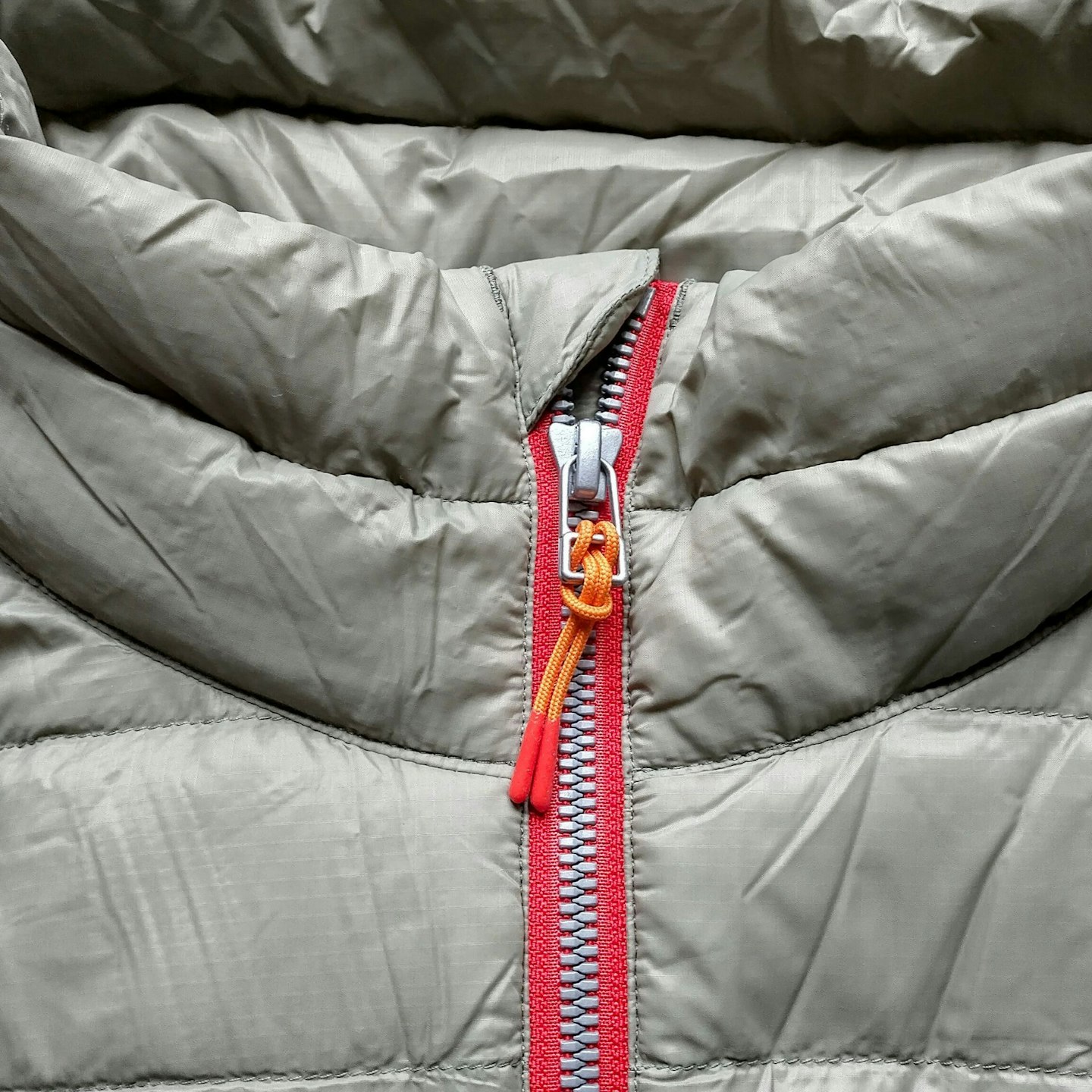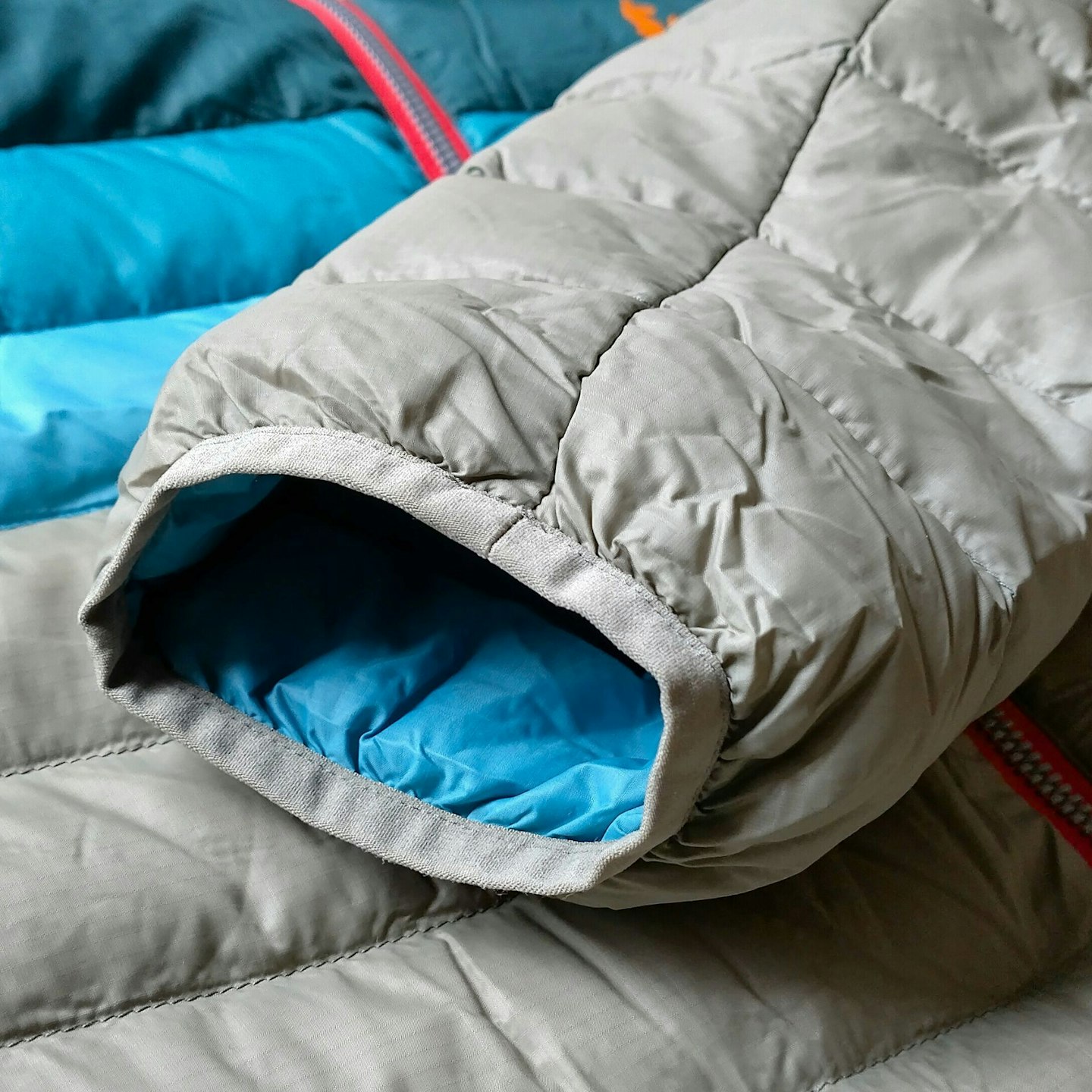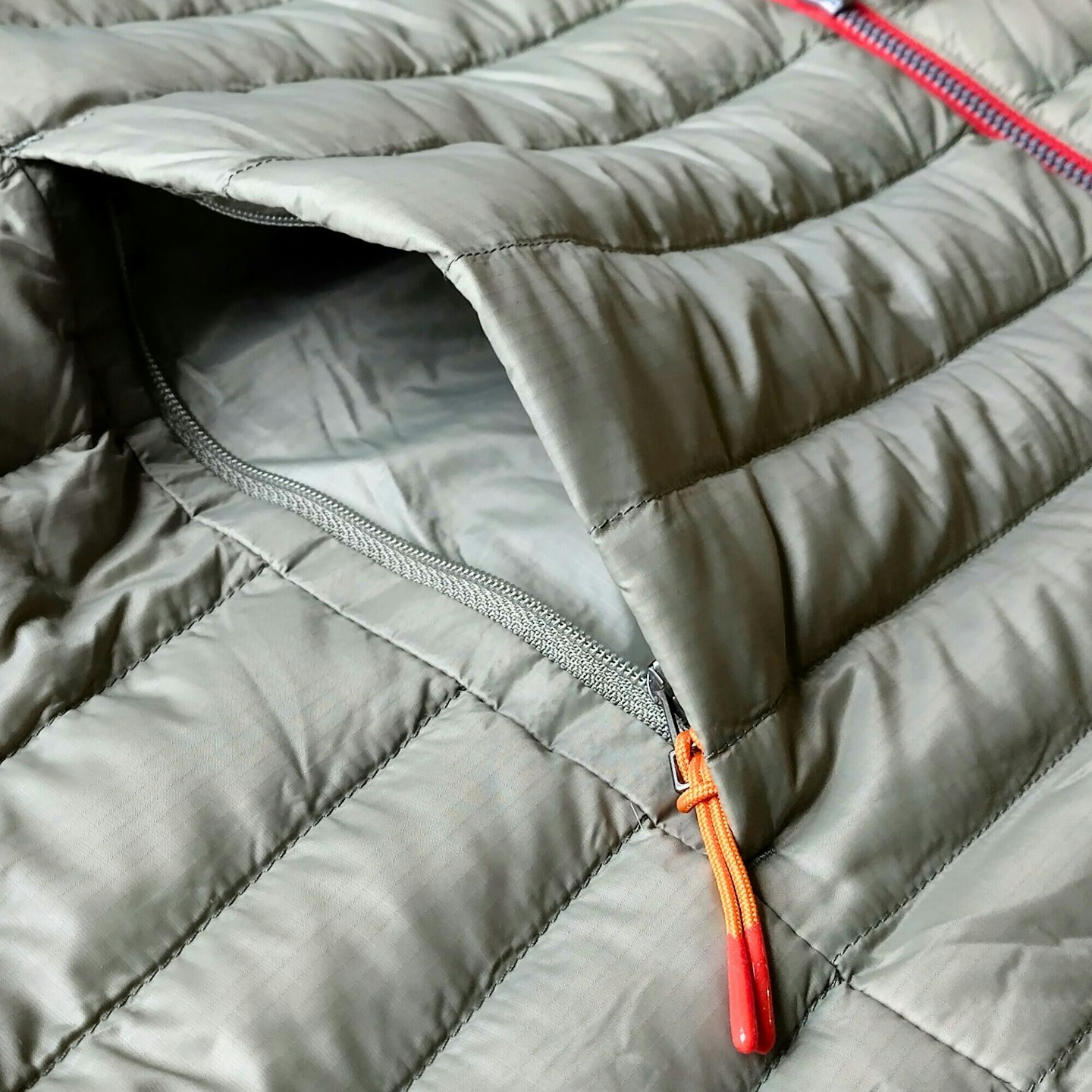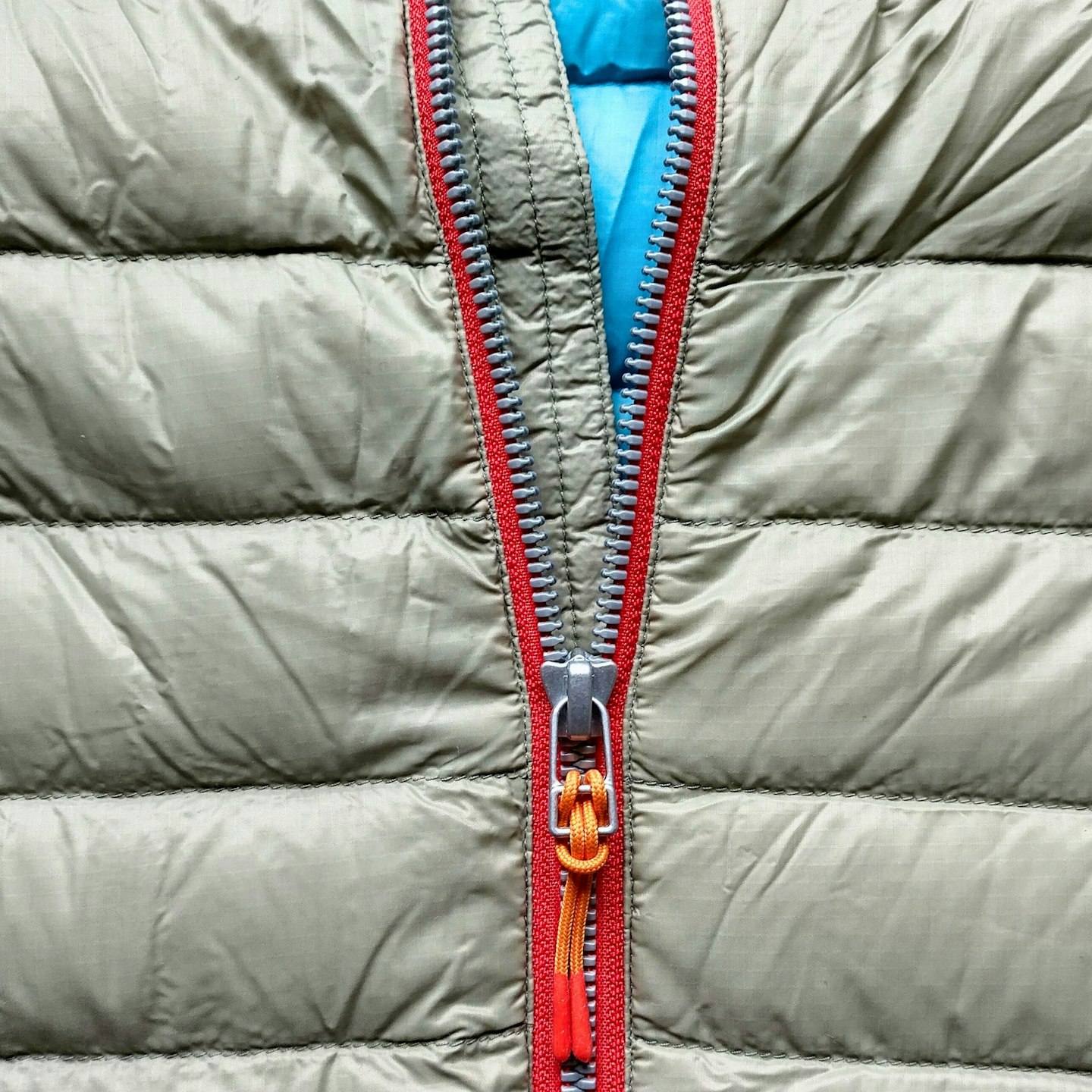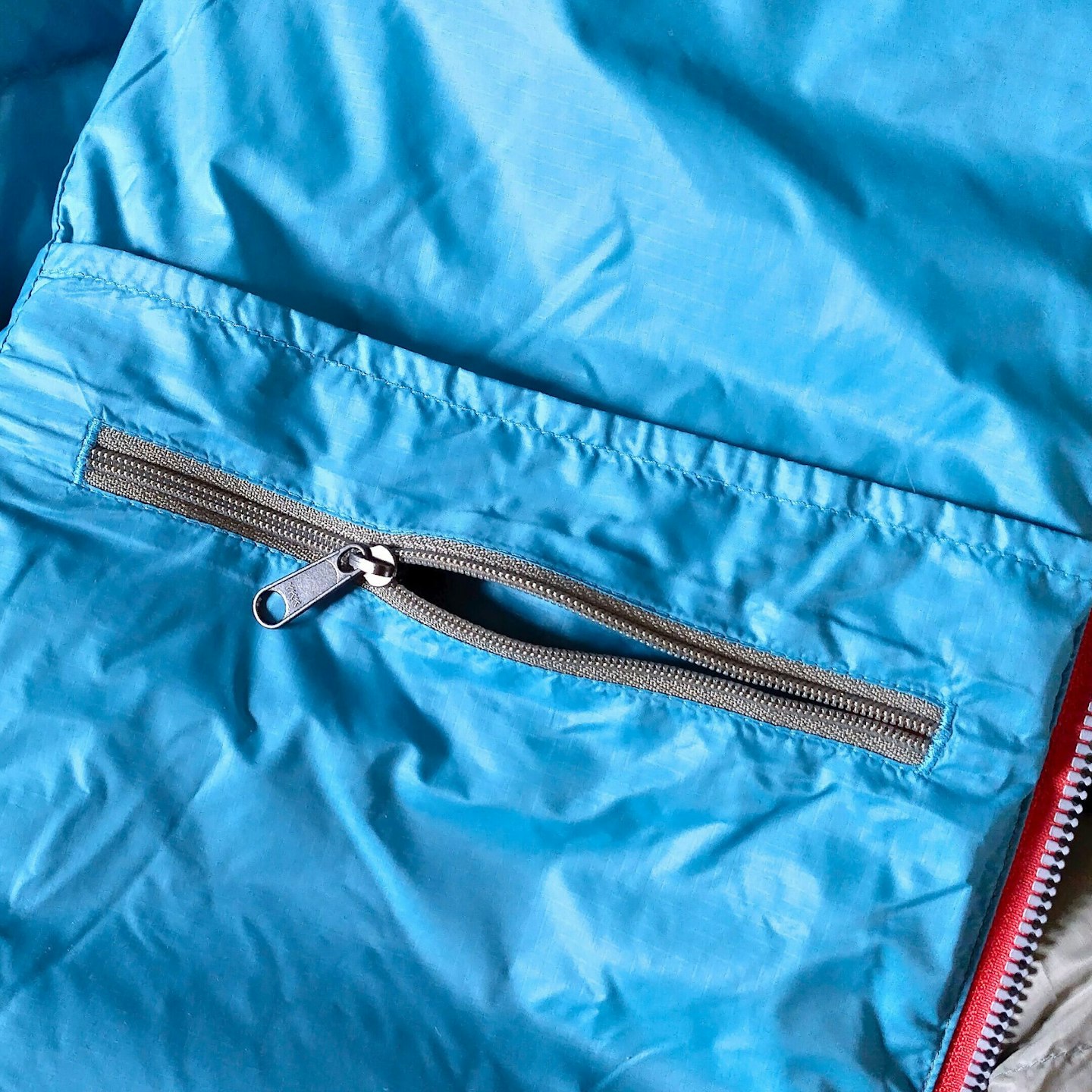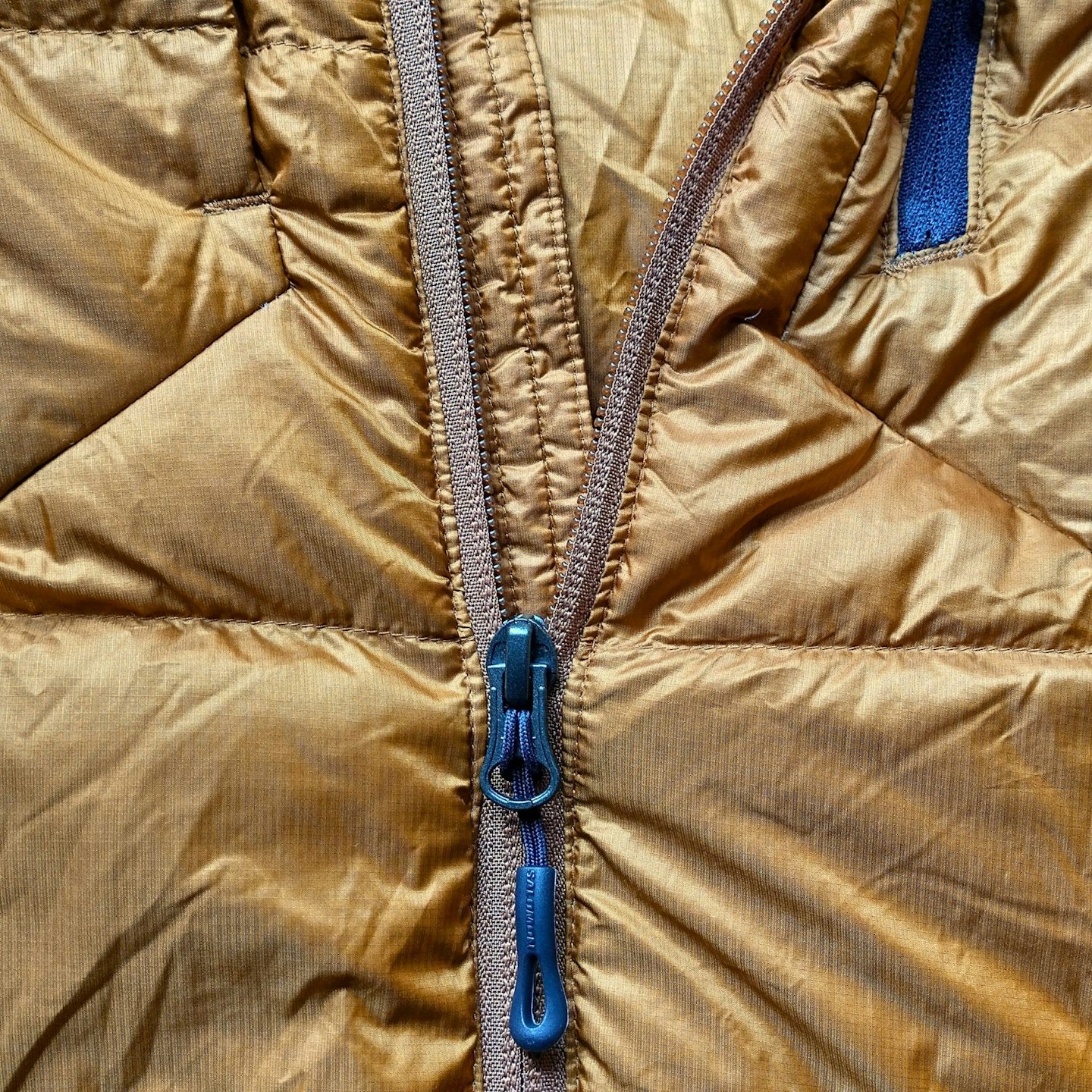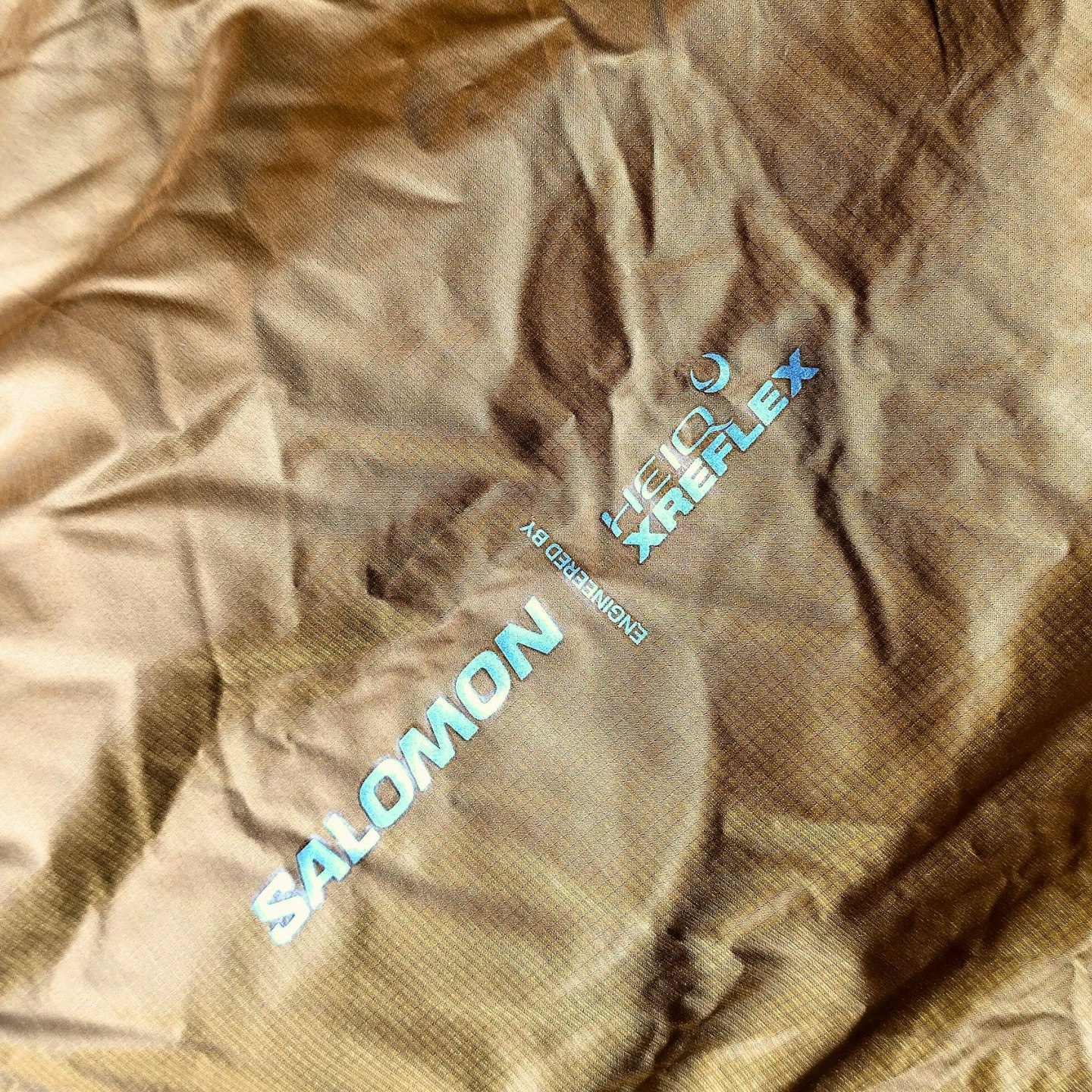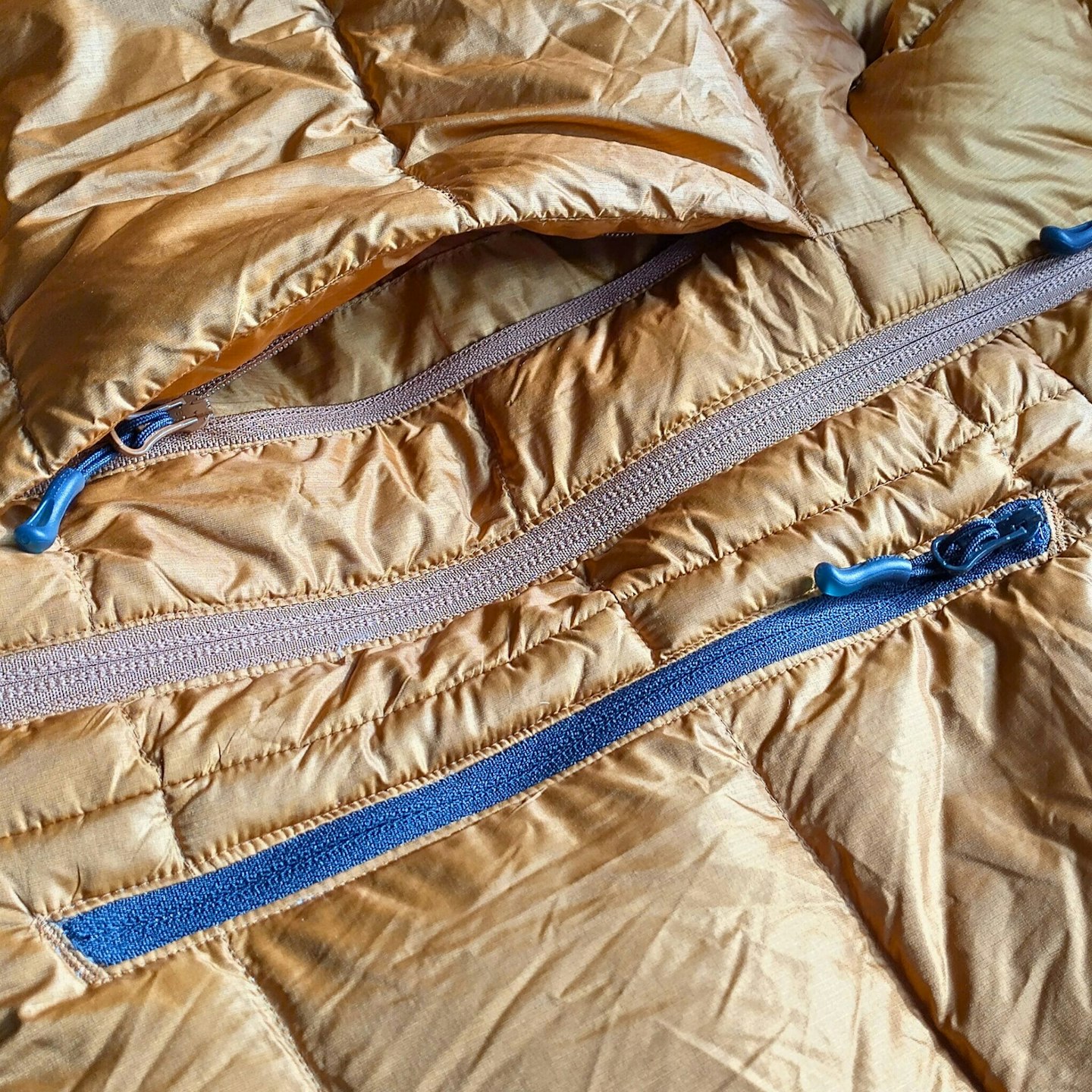Down jackets are a hiking jacket staple for so many of us who like getting outdoors in all seasons, no matter the temperature. But they do vary a lot in terms of performance and design, so choosing the right one can feel overwhelming.
You can find down jackets for keeping you warm in the park or on the school run, to lightweight options suitable for milder conditions or travelling, all the way up to beefy expedition jackets designed for use in Alpine and Polar conditions where the temperatures plunge deep into the negatives.
Once upon a time (not that long ago, really) down had no competition gram for gram when it came to insulating efficiency. That's why it is used so widely in insulated jackets and sleeping bags. But these days, cutting edge synthetic insulated jackets (and sleeping bags) are breathing down the neck of down, offering impressive warmth-to-weight ratios.
More on the comparison between down and synthetic later in this guide, but nevertheless, down still offers the best insulating performance and also has to potential to last for decades, which is why it remains a popular choice.
What are the best down jackets of 2025?
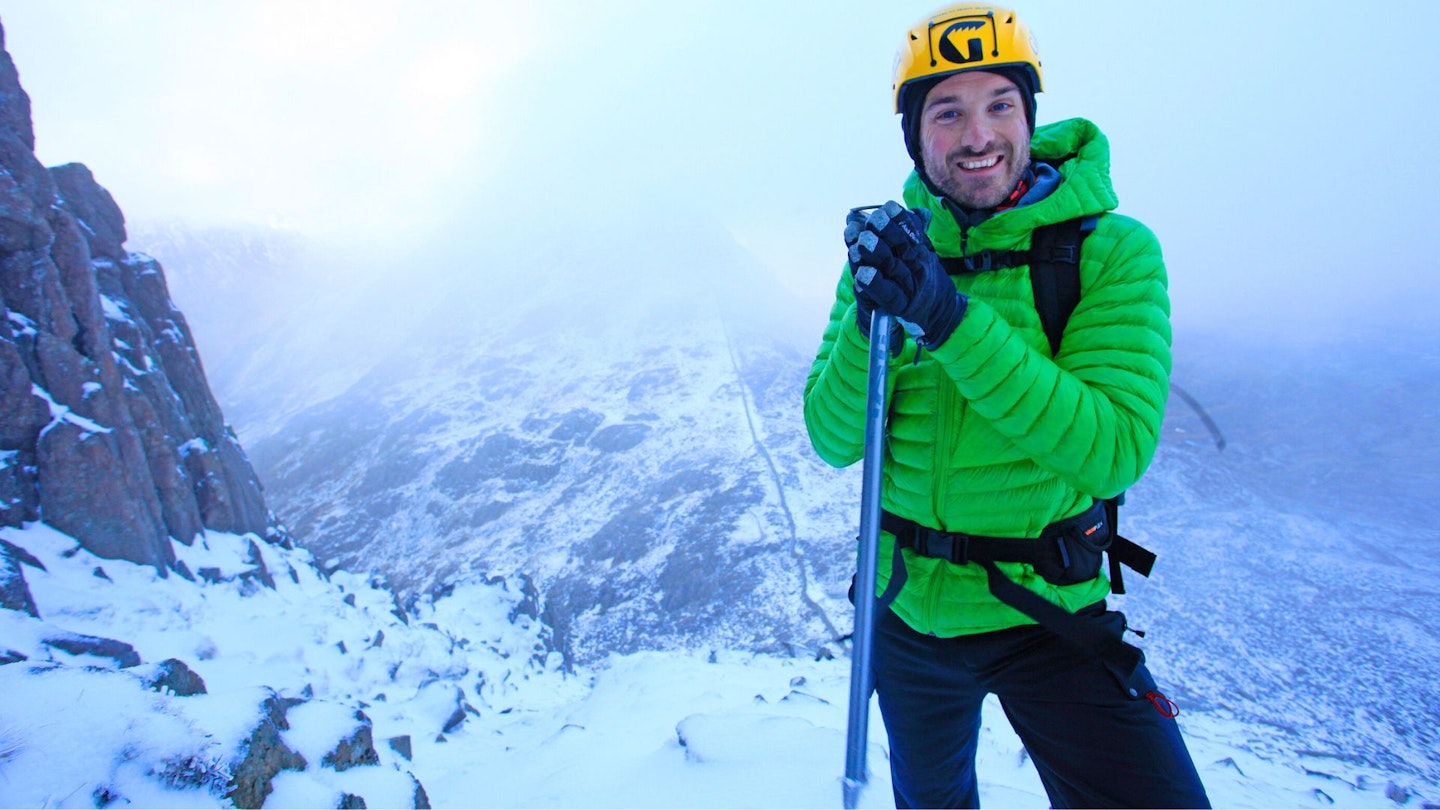
Best in Test: Artilect Divide Fusion Stretch Jacket
Best Value: Montane Anti-Freeze Hooded Down Jacket
Best warmth-to-weight ratio: Rab Mythic G
This guide to the best down jackets recommends the standout candidates in our tests. Our recommendations all excel for different reasons, be it value, innovation, or comfort. But one thing they all share is use of ethically sourced and traceable down feathers.
How we tested the best down jackets

The majority of the down jackets featured here were tested by Chris Williams, who is one of LFTO's staff writers and has been testing gear for us since 2021. Chris is from New Zealand and has journalistic, outdoor industry, and basically his lifetime's worth of hiking experience to bring to his gear reviews.
Our other experienced gear testers who have contributed to this list of down jacket recommendations are Ben Weeks, Milo Wilson, Kate Milsom, Fliss Freeborn, and Ellie Clewlow, who have been giving these jackets through serious trials and demands in the UK and abroad.
How effective a down jacket insulates is just the start of what we look for. The down jackets we test get worn in a range of conditions, ranging from nippy to the coldest temperatures we experience in the UK (usually on a mountain in Wales or Scotland).
Within that temperature scale we assess how well a down jacket insulates; if it's any good at keeping wind or water at bay; how breathable it is. Beyond performance, we get a feel for how the down jackets fit; how useful their features are; and how durable their construction is.
Of course, an absolute bottom line for us is the use of ethically sourced down adhering to Responsible Down Standard. We won't consider any down jackets that do not. Sustainability is an important consideration for us in general, so beyond responsibly sourced down, we look into brands' efforts on this front, such as the use of recycled material, ethical labour standards, and not using PFC/PFAs.
Read more about how we test.
Best down jackets reviewed:
We’ve always liked Rab’s Cirrus range for its practical performance and decent price point, and the Ultra Hoody feels like the most refined version yet. In fact, it won in the insulated jacket category of this year's Gear of the Year Awards.
It’s insulated with 100% recycled PrimaLoft Silver Luxe synthetic fill, which mimics the loft and packability of down, but keeps you warm even when it’s damp. That makes it a great bet for unpredictable UK hill days, especially if you’re bouncing between bursts of effort and rest stops.
In our testing, the Cirrus Ultra packed down neatly into its own pocket and handled a drizzly, blustery summit wait without letting any chills creep in.
This Cirrus Ultra isn't the absolute warmest jacket on test, but it hits a nice balance between warmth, weight (just 305g) and everyday wearability. The recycled 10D Pertex Quantum shell has a slight shine to it and isn’t the toughest, so we’d treat it more as a layering piece than a rugged outer – but for fast-and-light missions or chilly spring evenings, it’s a solid performer.
We also liked the soft, flexible cuffs and helmet-compatible hood, although a second chest pocket would’ve made it more useful for alpine days. Still, for a sustainable, affordable synthetic puffer, the Cirrus Ultra Hoody punches well above its weight.
Check out the women's version here
Read our full Rab Cirrus Ultra Hoody review here
Pros
- Continues to insulates when wet
- Heat reflective lining
- Sustainable production
- Body mapped design
Cons
- Elasticated rather than Velcro cuffs
| RRP: | £230 / $265 |
| Weight: | 584g / 20.6oz (men's M) |
| Fabric and fill: | 20D Recycled Pertex Quantum outer (38gsm) with fluorocarbon-free DWR coating, 10D Recycled Pertex Quantum lining (28gsm) with fluorocarbon-free DWR coating |
| Men's sizes: | S - XXL |
| Women's sizes: | 8 - 16 |
When you come across a jacket like this, it becomes evident that the outdoor industry's innovation has remained relatively stagnant for quite some time. The Artilect Divide Fusion Stretch Jacket is one of the most innovative insulated jackets we’ve tested to date. It’s easy to be sceptical, but it has wowed us during our testing by bearing features and tech that genuinely enhance its performance in practical outdoor scenarios.
One of the standout features is the hydrophobic down treatment - Allied Down's ExpeDRY treatment utilizing FUZE technology. While the terminology may sound complex, the essence is simple: it employs a chemical-free method of, believe it or not, bonding gold particles to the down. We found this innovative approach significantly improves moisture evaporation.
There are several other clever additions to this jacket that have caught our attention. The inclusion of stretchy wool side panels enhances both comfort and breathability. And the main fabric features a unique DWR called EMPEL, which surpasses industry standards in terms of eco-friendliness and performance. During our testing, we encountered heavy rain while wearing this jacket, and to our surprise, it effectively repelled water for approximately 15 minutes, which is quite impressive for a non-waterproof jacket.
The jacket's slightly athletic fit, along with the addition of stretchy wool panels, makes it ideal for layering. Overall, the Artilect Divide Fusion Stretch proves to be an exceptional winter mid-layer and a reliable standalone outer layer.
Check out the women's version here
Read our full Artilect Divide Fusion Stretch Jacket here
Pros
- Innovative approach to water-repellency
- Versatile
- Sustainable
- Highly functional yet stylish
Cons
- Not worth it for casual hikers
| RRP: | £340 / $370 |
| Weight: | 400g / 14.1oz |
| Insulation: | RDS 700-fill down w/ PFC-free ExpeDRY hydrophobic treatment featuring FUZE |
| Men's sizes: | XS - 2XL |
| Women's sizes: | XS - XL |
| Fabric: | Bluesign-approved 20D Toray fabric w/ PFC-free GTT EMPEL DWR; 60gsm Lavalan European Wool |
An updated version of the Montane Featherlite Down Jacket, the Anti-Freeze offers top-of-the-line insulation with a couple extra tablespoons of comfort and style.
We were immediately drawn to this jacket for its cosy and protective hood system. Put it up while fully zipped and you’ll find your neck and head comfortingly enclosed in squishy down baffles.
There’s a hidden adjustment system on the inside of the hood to get it as tight or loose as desired, and the peak is subtle but does its job in the rain.
The Anti-Freeze is excellent as a stand-alone jacket, with subtle weatherproofing features like YKK aquaguard zips and a cinchable hem. It isn’t 100% waterproof, but Pertex ripstop outer does a good job of protecting the down filling, which is itself also water resistant.
For most outings, this may be your new go-to. Despite being well filled, the Anti-Freeze is surprisingly packable, and even comes with a stuff sack hooked inside the right pocket. An ideal bit of kit for varied weather.
Check out the women's version here
Read our full Montane Anti-Freeze review here
Pros
- Very comfortable in the cold
- Packs down small
- Highly adjustable for better insulation
Cons
- Cuffs aren’t adjustable or super secure
| RRP: | £225 / $285 |
| Weight: | 360g / 12.69oz |
| Insulation: | RDS 750-fill down w/ PFC-free HyperDRY hydrophobic treatment |
| Men's sizes: | XS - 3XL |
| Women's sizes: | 8 - 18 |
| Fabric: | Recycled Pertex Quantum Eco w/ PFC-free DWR |
The Earthrise is Mountain Equipment’s answer to the question: can a down jacket be warm, practical and genuinely sustainable? The answer, in this case, is a confident yes. With 100% recycled fabric and down, it’s a rare example of eco-friendly kit that doesn’t feel like a compromise.
It’s not the lightest or most technical down jacket we’ve tested, but it punches well above its weight for all-round usability. We’ve worn it as a midlayer on frozen ridgelines and thrown it on over everything during damp lunch stops – and thanks to its snug fit and generous baffling, it always delivered a welcome hit of warmth.
The shell fabric is windproof and DWR-treated, but it won’t cope with sustained wet weather, so keep a waterproof handy. That said, for dry winter days, chilly campsites and fast-moving hikes in cold conditions, the Earthrise earns its keep.
The two handwarmer pockets are deep and glove-friendly, and the zipped chest pocket swallows a phone with ease. It’s also refreshingly packable for a jacket of this warmth, compressing easily into a rucksack corner without complaint.
At 480g, it’s not ultralight, but it is ultra-reliable. A comfortable, well-designed jacket with serious green credentials.
Read our full Mountain Equipment Earthrise review here
Check out the women's version
Pros
- Superb eco credentials
- Excellent sustainability efforts
- Comfortable
- Good features
Cons
- Quite expensive
- Quite a tight/athletic fit so you may need to size up
- Only 700 fill power
- Could be warmer
| RRP: | £200 / $249.95 |
| Men's sizes: | S-XXL |
| Women's sizes: | 8-20 |
| Weight: | 411g/14.5oz (men’s small) |
| Main Fabric: | 20-denier Earthrise, 100% recycled polyester |
| Insulation: | 700 fill power, 100% recycled down |
The Patagonia Women’s Down Sweater Hooded Jacket is a superb lightweight insulating layer, a great addition to nearly any outdoor wardrobe.
This jacket blends thoughtful design and environmental responsibility, crafted from 100% recycled NetPlus® shell fabric, sourced from discarded fishing nets, and insulated with ethically sourced down.
Patagonia continues to show that staying warm doesn’t have to come at the planet’s expense. Wearing it is as satisfying as it is sustainable. Especially in the stunning faded sage green, this jacket stands out in all the right ways.
With a relaxed fit, it’s ideal for layering on freezing days or wearing solo when the weather is milder. Incredibly lightweight yet impressively warm, it features 800-fill power down that feels almost weightless on your shoulders.
The adjustable, helmet-compatible hood keeps cold air out with ease, making it a reliable choice for climbers, skiers, or anyone needing high-performance gear. Just don’t take it kayaking – it’s still a down jacket, after all.
While it comes at a slightly higher price point, this reflects Patagonia’s unwavering commitment to quality and sustainability. This isn’t just a jacket; it’s an investment in durability and mindful fashion. Its timeless design ensures you won’t need to replace it after just a few seasons. It’s built to last and to be cherished.
Read our full Patagonia Down Sweater Hooded Jacket review here
Pros
- Made with material sourced from old fishing nets
- Very lightweight
- Warm
- Stylish
Cons
- On the pricier end
| RRP: | £210 / $265.94 |
| Fabric: | NetPlus® 100% postconsumer recycled nylon ripstop |
| Insulation: | 800-fill-power 100% Responsible Down Standard down |
| Men's sizes: | XS-XL |
| Women's sizes: | XS-XL |
| Weight: | 343g / 12.09oz |
The Rab Women’s Microlight Alpine Jacket has earned its reputation as a staple for good reason, combining practicality, warmth, and a stylish design. Sure, it might double as your mum’s go-to Waitrose jacket from autumn to early spring, but there’s a reason for its popularity.
At just 413g, this jacket is impressively lightweight yet offers exceptional warmth. Filled with 750FP R.D.S.-certified European goose down, it’s not overly bulky but still delivers serious insulation, making it perfect for frosty winter walks or brisk alpine adventures. Considering its performance, the £210 price tag feels reasonable, especially compared to similar jackets that often exceed £250.
What truly sets this jacket apart is its fit. The slim, flattering design is thanks to individually stitched side panels that contour to the female form beautifully. Not only does this enhance its aesthetic appeal, but it also improves heat retention by eliminating unnecessary space. The design is particularly accommodating for those with a larger bust, offering a more tailored and comfortable experience.
Equally suited for trails or city streets, the Microlight Alpine Jacket compresses easily into a compact size, making it an effortless addition to any backpack when the weather improves. It comes in a variety of appealing colours, from vibrant two-tone options for an outdoor-inspired vibe to more understated shades for everyday wear.
Despite its lightweight build, the jacket doesn’t compromise on durability; the Pertex Quantum fabric is both tough and highly water-resistant, standing up to wind and light rain with ease.
The only drawback? Climbers may find the hood a bit snug when trying to fit it over a helmet. For most other activities, though, it performs brilliantly. If you’re after a jacket that offers warmth, packability, and a sleek design, the Rab Microlight Alpine is a top contender.
Read our full Rab Microlite Alpite review here
Pros
- Great fit
- Versatile and lightweight
- Sustainable
- Good value
Cons
- Hood not compatible for climbing helmet
| Price | £178.50 / $225.83 |
| Fabric | 100% Recycled Pertex Quantum 30D nylon |
| Insulation | 100% Recycled GRS-certified 700FP down. Nikwax hydrophobic water-resistant down finish |
| Men's sizes | XS - 2XL |
| Women's sizes | UK 8 -18 |
| Weight | 413g / 14.57oz |
The Cotopaxi Fuego is a high-quality down jacket that has earned its right to be featured here on the grounds of performance and sustainability.
It’s easy to look at a colourful jacket like this and think ‘form over function’. Not so here. The Fuego is lightweight and has a regular fit, which makes it super easy to slot into a layering system. But the use of 800-fill down also makes it a very efficient insulator.
On test, we particularly liked the relatively chunky main zip, and clever internal pocket design, which features an open drop-in pocket and a zip pouch. There are external handwarmer pockets too.
From winter weekend dog walking to peak-to-pub hillwalks to travel, the Fuego is a versatile down jacket at a good price.
Cotopaxi is certified climate neutral and a B Corp. While Cotopaxi is a reasonably sustainable brand on the whole, the Fuego jacket isn’t one of its standout sustainable products. It of course uses responsibly sourced down, and is made in a Fair Trade Certified factory. But the nylon fabric isn’t recycled or repurposed, and the DWR isn’t PFC-free.
Check out the women's version here
Pros
- Excellent warmth-to-weight ratio
- Great range of colour schemes
- Made in Fair Trade Certified factory
- Suitable for hiking, travel, and everyday
Cons
- Could use more sustainable materials
| RRP: | £245 / $295 |
| Weight: | 397g / 14oz |
| Insulation: | RDS 800-fill down |
| Men's sizes: | S - 2XL |
| Women's sizes: | XS - XL |
| Fabric: | 20D nylon w/ DWR |
The Elixir Ultra Down is another jacket that employs a heat-reflective finish to boost warmth without increasing bulk.
We found the Elixir Ultra Down jacket very comfortable and suitable for frigid conditions. The HeiQ XReflex-800-fill goose down combo creates a very warm design. Touches such as the stretchy fabric sleeves help not only keep out the cold but improve comfort and freedom of movement. The hood and hem are adjustable, too.
We were also pleased with the number of pockets on offer – two chest and two handwarmer pockets. This makes it easy to distribute items and not have to stuff them all in one or two pockets.
The fit is like a classic puffer jacket: snug but a little boxy – however it can be layered with a regular or relaxed-fitting hardshell waterproof jacket if needed. If you’re going to wear it on its own, you’ll be pleased to know the outer material has a PFC-free DWR, which keeps a smattering of drizzle at bay.
Check out the women's version here
Pros
- Excellent comfort
- Effective heat-reflective technology
- Good pockets
- PFC-free DWR
Cons
- You may want something slimmer/more athletic
| RRP: | £360 / $399.95 |
| Weight: | 451g / 15.9oz |
| Insulation: | RDS 800-fill down |
| Men's sizes: | XS - 2XL |
| Women's sizes: | XS - 2XL |
| Fabric: | Nylon w/ PFC-free DWR |
What to look for in a down jacket
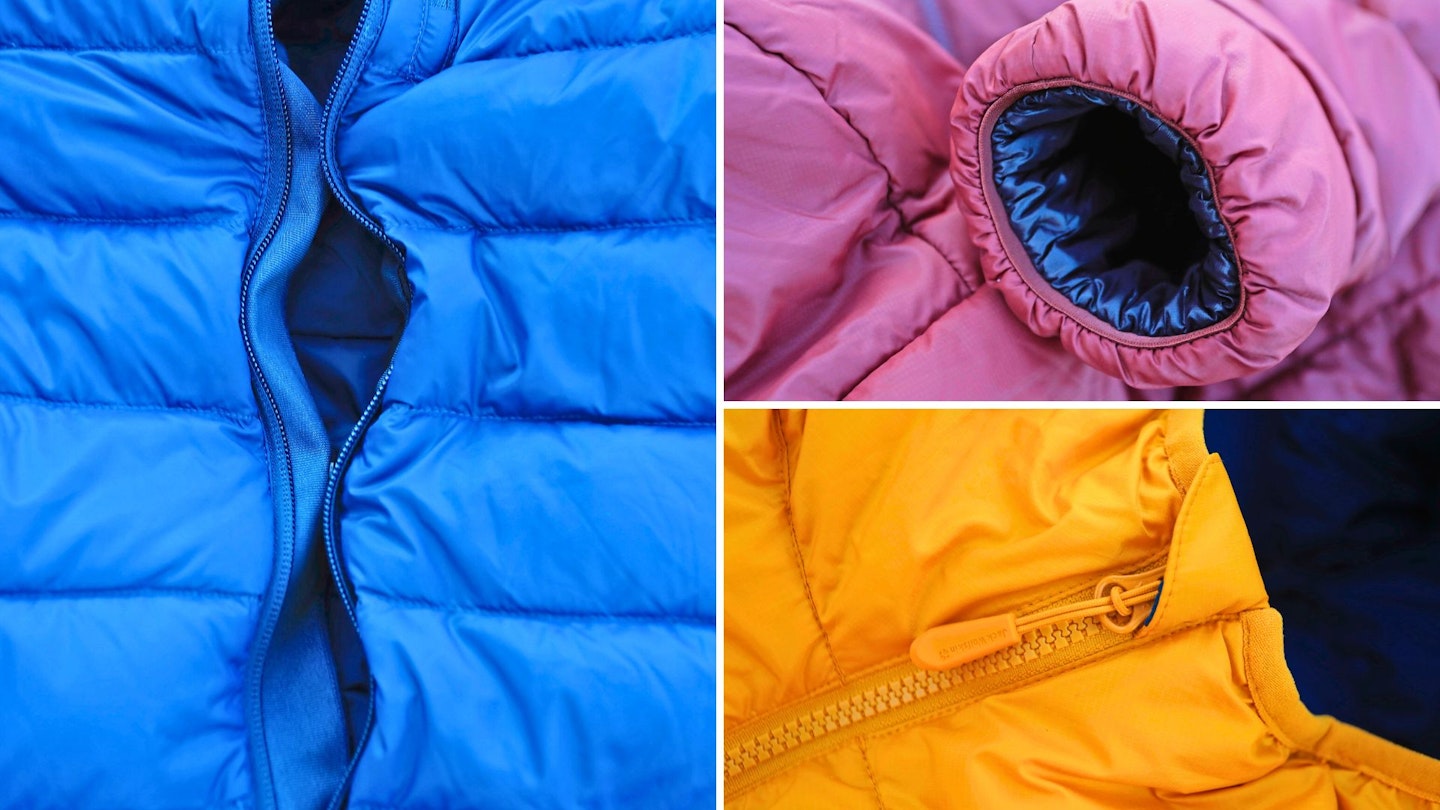
How does down insulation work?
In its usual place of residence, down sits on the underside of waterfowl like ducks and geese, beneath the oily outer plumage. Down is clustered together and traps air pockets, which then trap body heat. When inserted into a jacket or sleeping bag, down does exactly the same thing.
Is down better than synthetic insulation?
Down or synthetic? That’s the dilemma. Down has a superior warmth-to-weight ratio, but struggles when it becomes damp unless it has a hydrophobic treatment. Synthetic insulation offers better value, easier maintenance and performs better than non-treated down when damp. For ethical reasons, make sure goose or duck down adheres to the Responsible Down Standard.
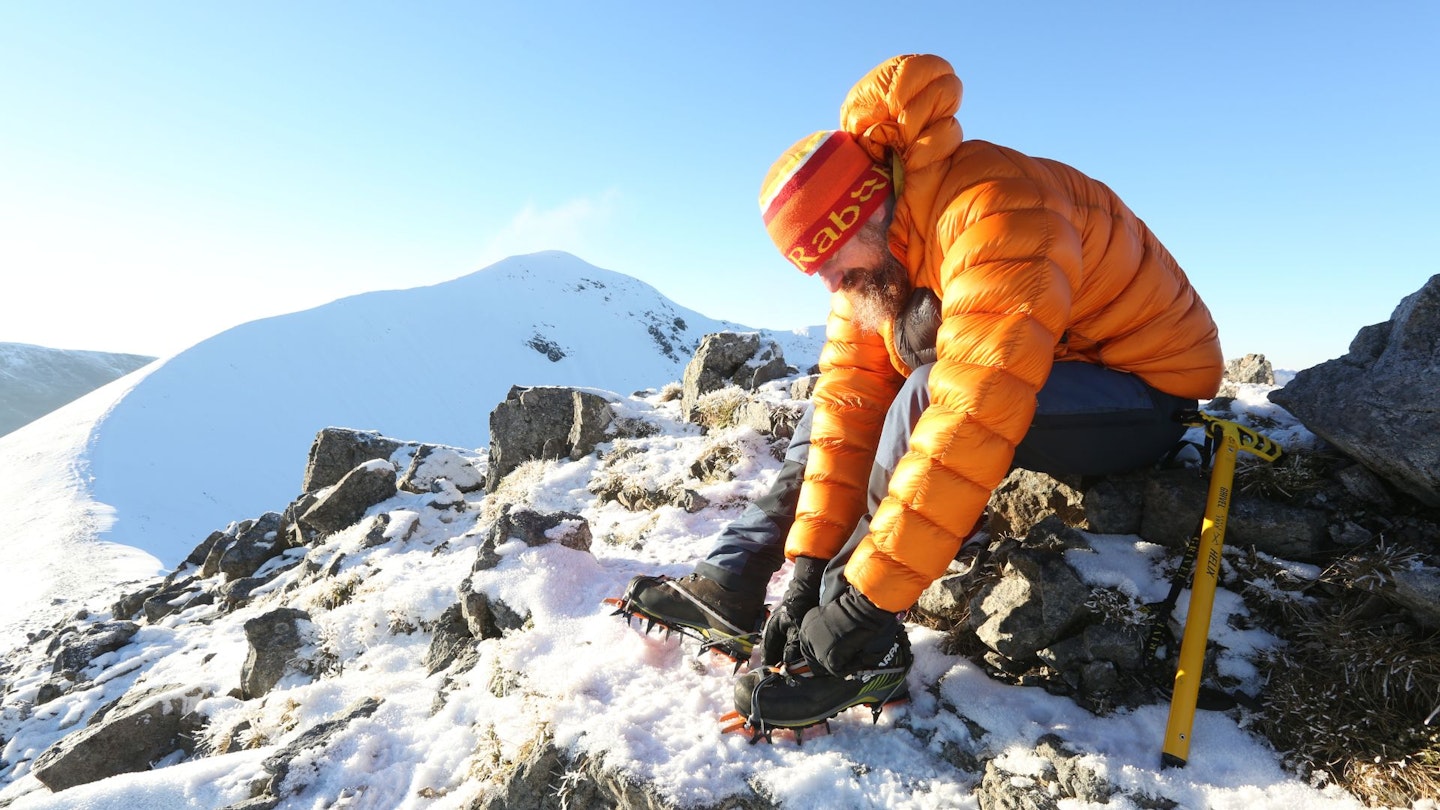
What is fill power?
Fill power is a rating system for down that measures loft. Think of loft as 'fluffiness' or quality. A higher fill power rating means the down has greater loft/fluffiness, which makes it more efficient at trapping heat. For example, a jacket with 900-fill down has greater loft and is more efficient (and therefore warmer) than a jacket with 600-fill down. As the fill power rating increases, so too does the warmth-to-weight ratio.
But that's not quite the end of the story, because fill weight is important too…
What is fill weight?
Fill weight is the amount of down in a jacket (or sleeping bag), measured in grams. The higher the fill weight, the more down a jacket has and the warmer it will be. But it’s important to check both the fill weight and fill power.
A jacket with 900-fill down is warmer than a 600-fill jacket when they have the same fill weight. But if the 600-fill jacket has a higher fill weight (i.e., more down), it can be warmer, but will of course be heavier.
Are down jackets waterproof?
Down jackets usually have a nylon outer fabric with some having durable water repellent (DWR) finish to some degree. But most are not waterproof. But there are down jackets that are waterproof - either with a waterproof outer fabric or designed as a 3-in-1 jacket with a removable down inner jacket and waterproof outer shell.
What are baffles?
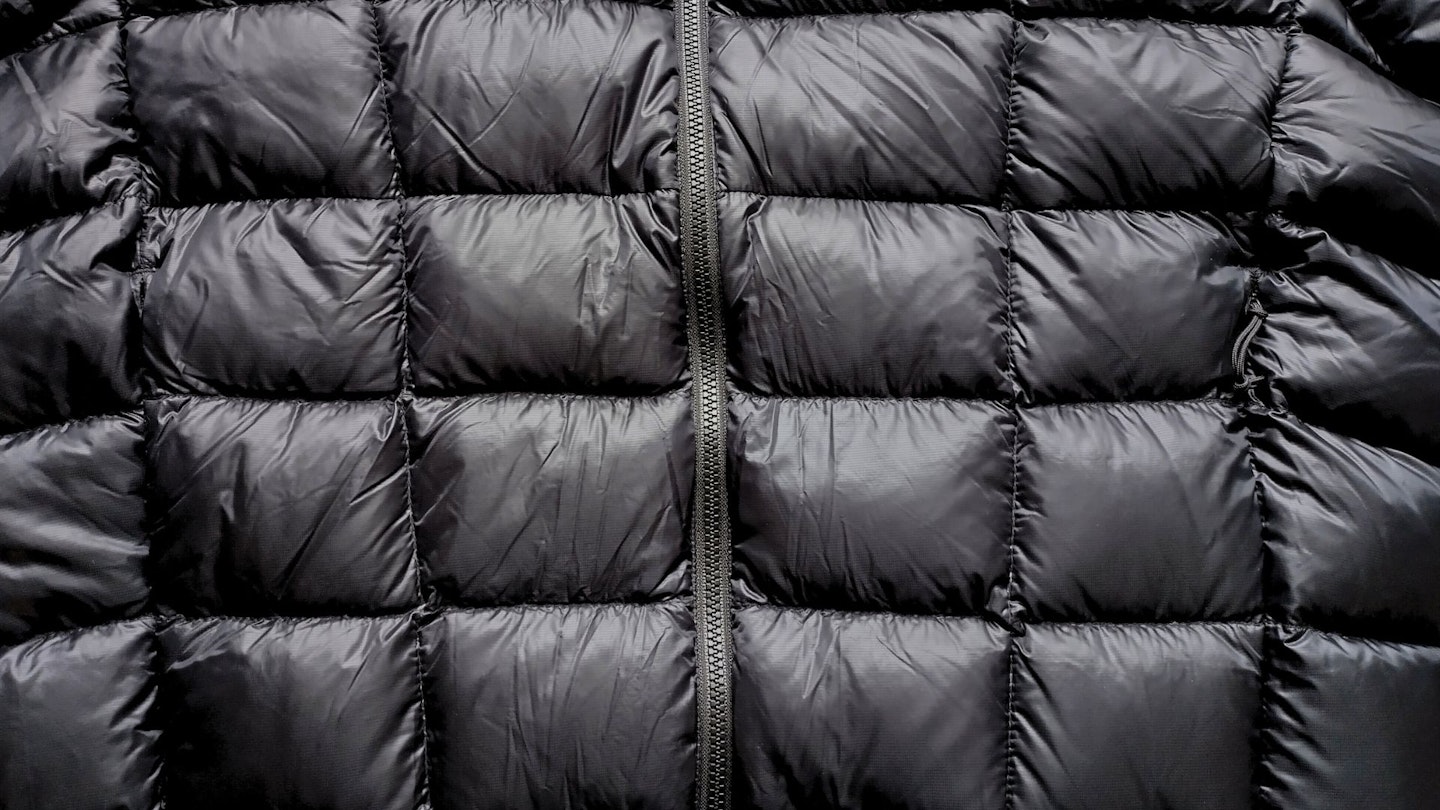
Baffled by baffles? To stop the down insulation from clumping together at the bottom of the jacket, down jackets have baffles, which are closed sections to trap the fill inside pockets.
There are two types: box-wall and sewn-through baffles. Box-wall baffles are better for warmth because they allow the down to loft well. But this approach increases cost because it requires more fabric, and is a heavier construction too. Sewn-through baffles are usually used on lighter down jackets. It's also an easier and less expensive design, but they don't allow the down to loft to its full potential.
What kind of zips should a down jacket have?
Two-way zips are a better for hiking because they allow the jacket to be opened from the bottom as well as the top. This gives more room at the bottom and is therefore more comfortable when sitting down.
How should I store my down jacket?
While down jackets are highly compressible, it's best to store them loose in the wardrobe, so the down retains its lofting qualities. Compressing down for short period, such as in a rucksack while on a hike, is fine, but don’t store them like this at home.

Down insulation care and maintenance
Down insulated gear can last a very long time if cared for properly. Down jackets only require washing on an as needed rather than habitual basis. So, this might be once or twice per season if you use your jacket for everyday or casual use, or once a season plus a wash after each particularly gruelling outing if you're an avid outdoorsperson.
When you do come to wash your down jacket, use a specific down wash instead of your usual laundry detergent. Laundry detergents can leave behind residue, which inhibit the jacket's breathability and insulating abilities. Dedicated down wash like Grangers Down Wash or Nikwax Down Wash.Direct gently but effectively clean down insulated gear while revitalising breathability and loft.
Read the garment's care instructions, but down jackets can be dried in a dryer on a low heat setting, ideally with tennis balls or dryer balls.
If your down jacket suffers a rip, broken zip or some other issue, you can get them repaired. Many outdoor retailers and brands offer repair services*. These are cost effective and a great way to take action towards being more sustainable.
*some such as Lancashire Sports Repairs, Cotswold Outdoor and Alpkit repair any brand, while others only repair their own gear.
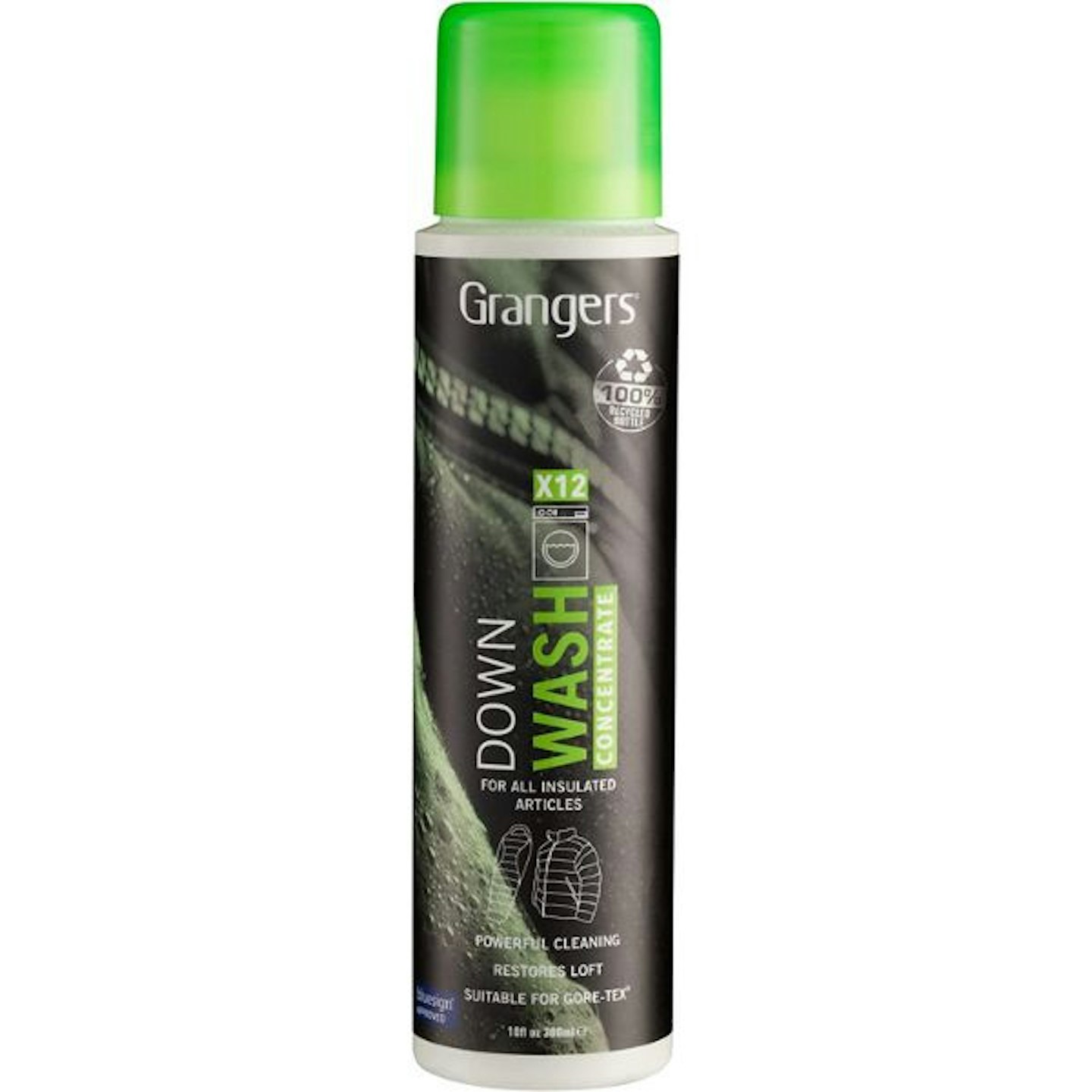
Pros
- Eco friendly and PFC-free
- Concentrated solution
- Suitable for machine or hand washing
Cons
- Costs more than regular detergent
Pros
- Eco friendly and PFC-free
- Suitable for machine or hand washing
Cons
- Grangers Down Wash is more concentrated
About the author
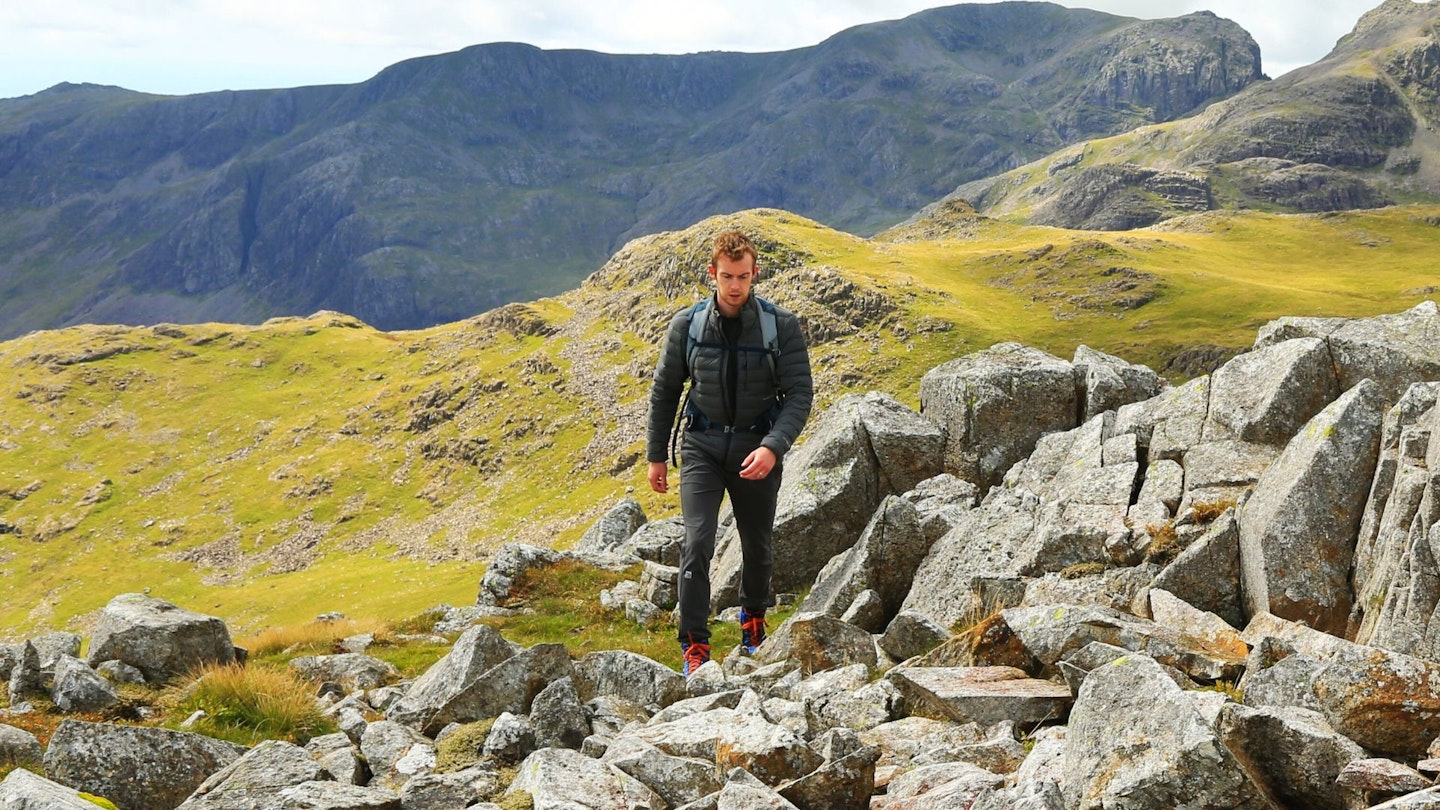
Chris Williams is a writer and gear tester for Live For The Outdoors, specialising in hiking and trail running. He's from New Zealand and has been hitting the trails and exploring the remote Te Waipounamu almost all his life.






